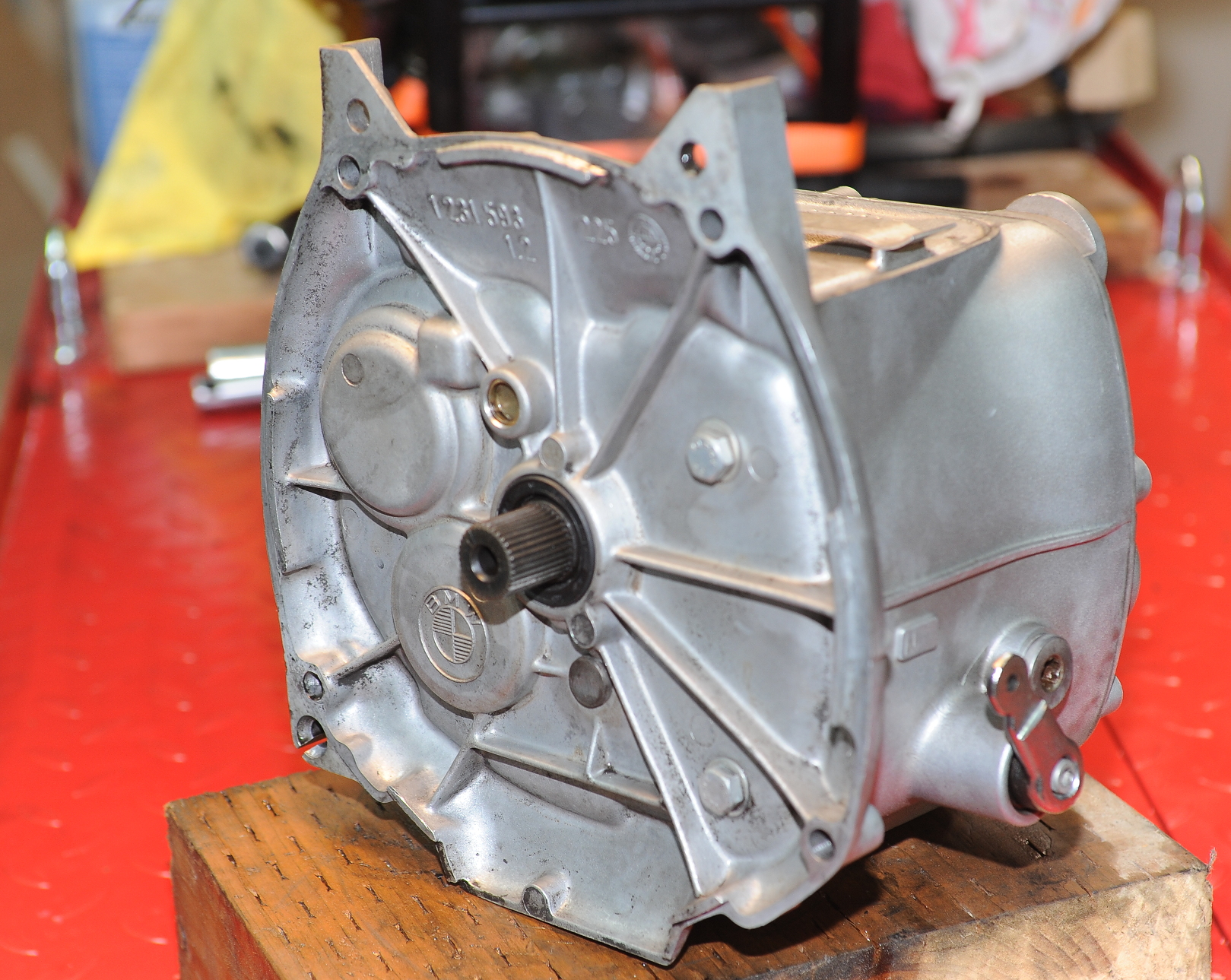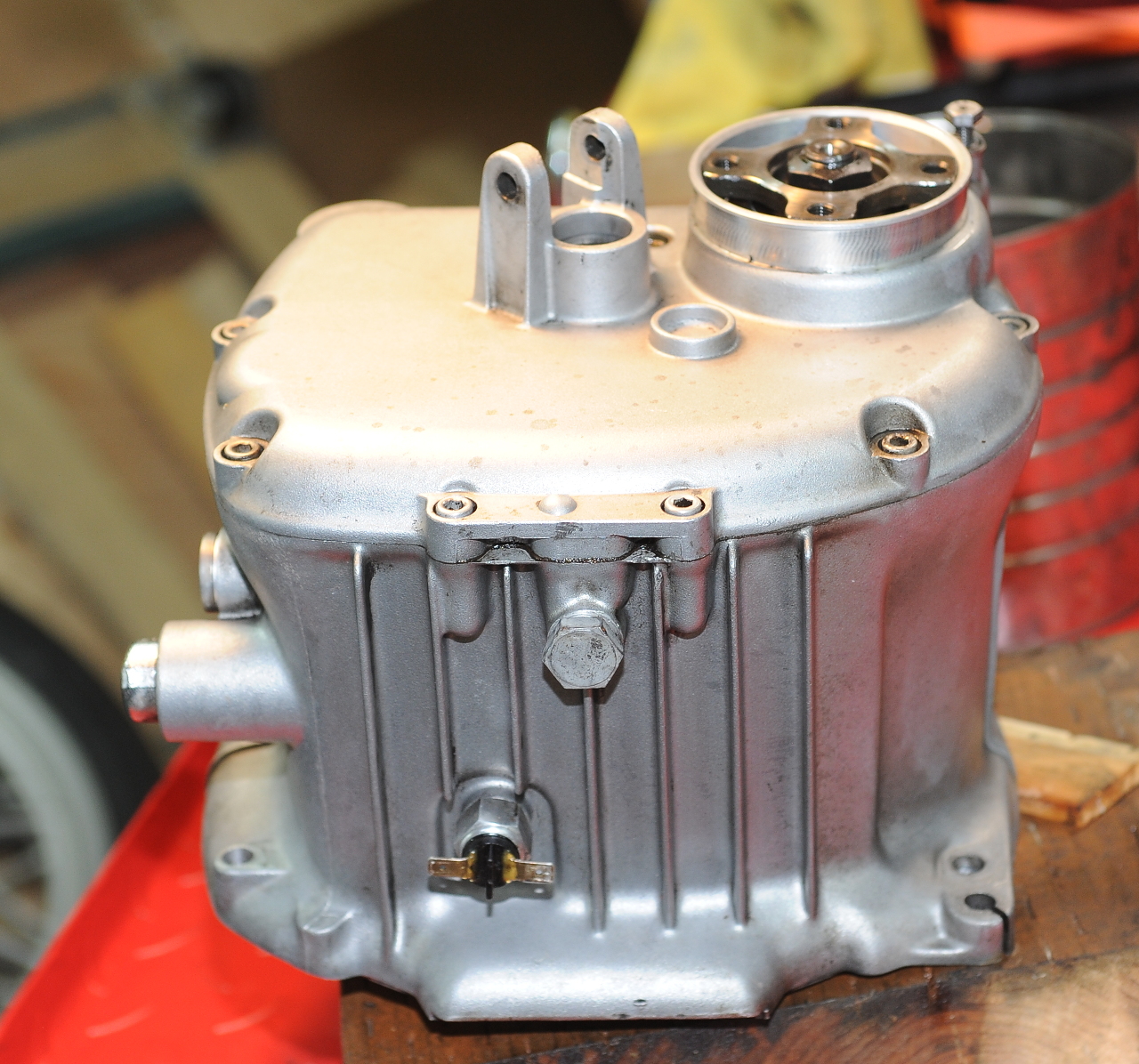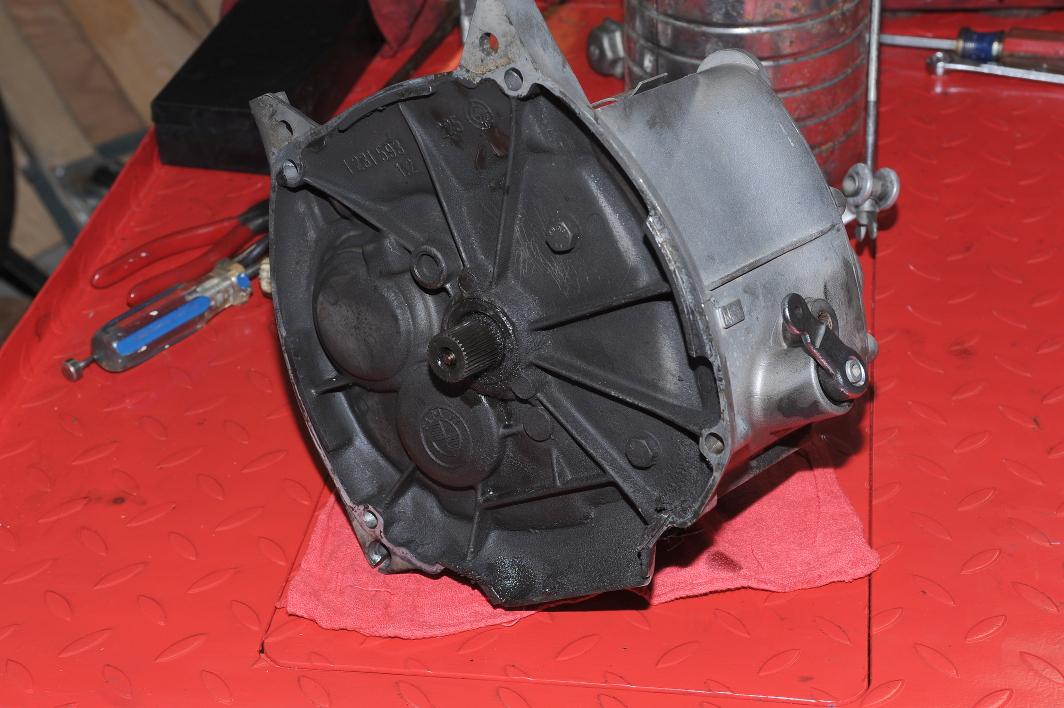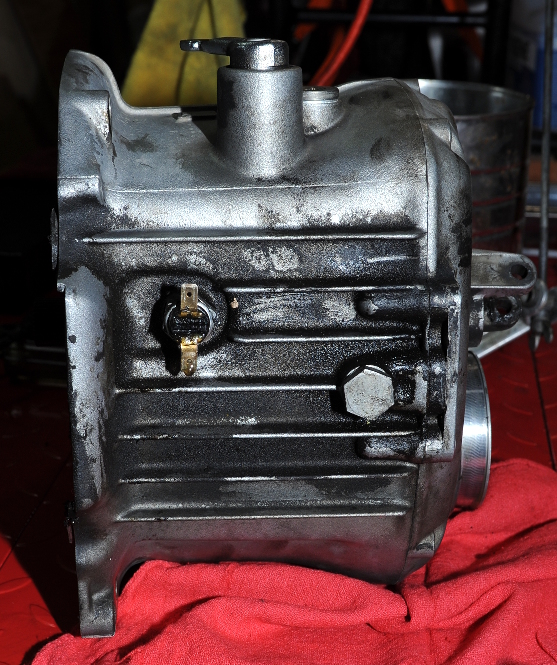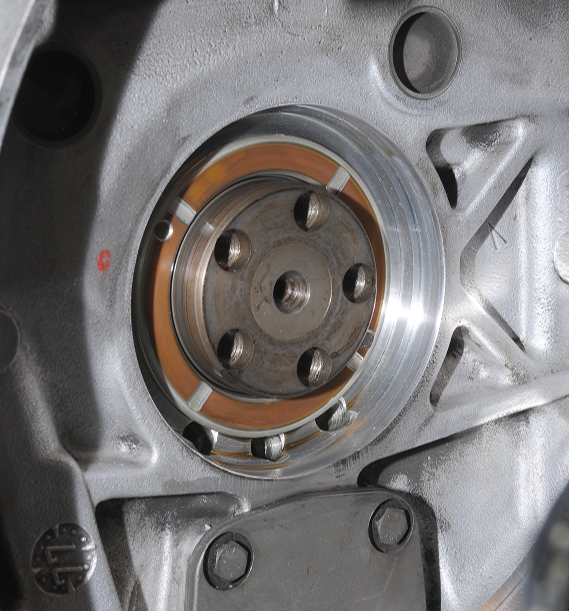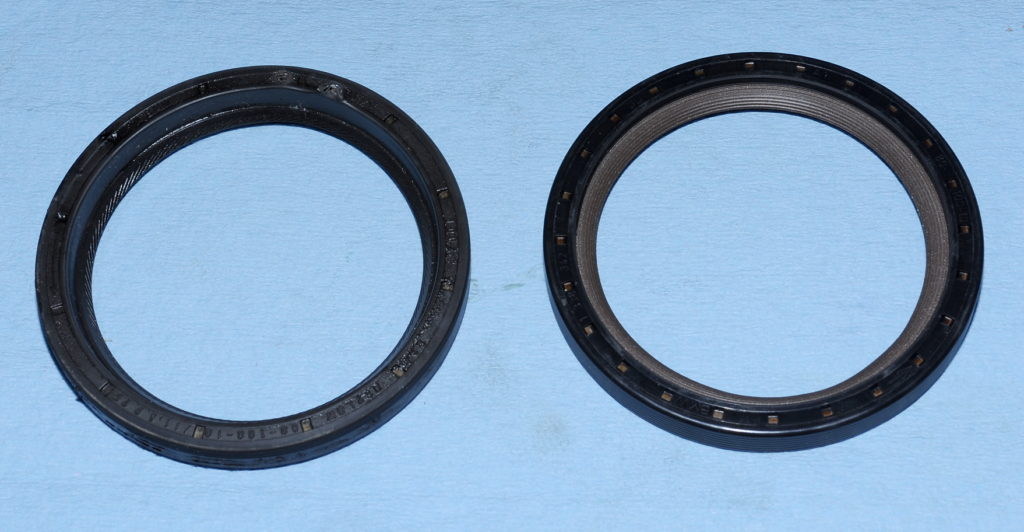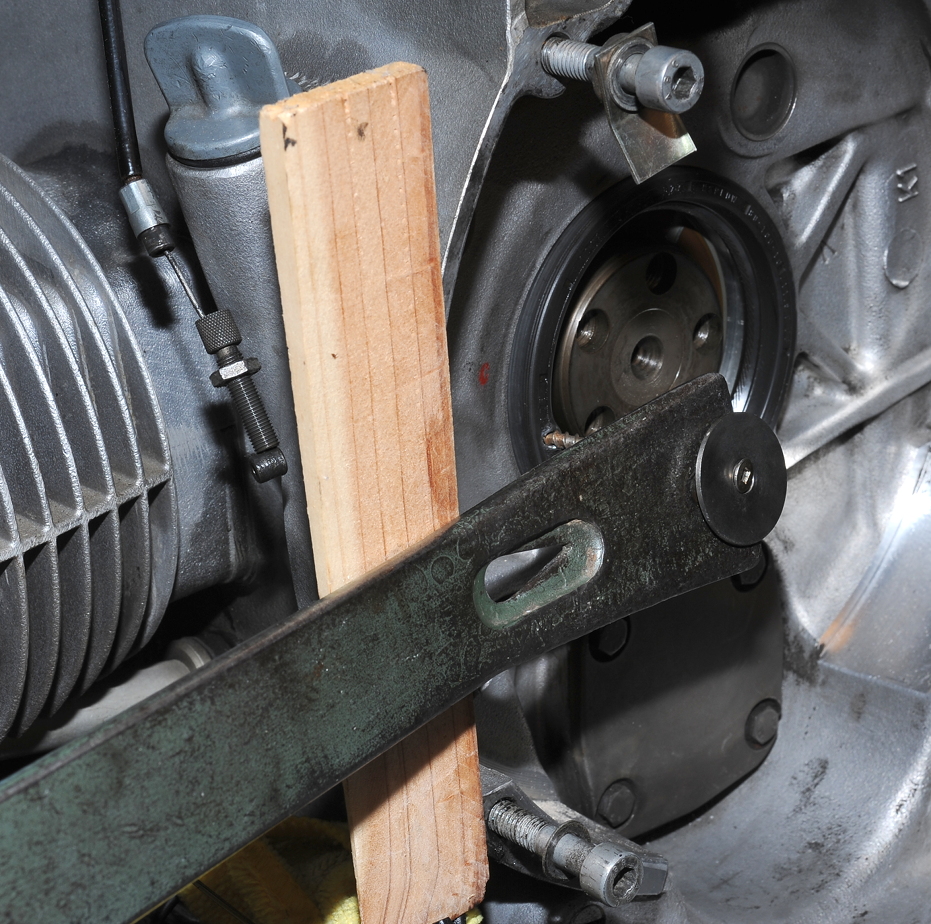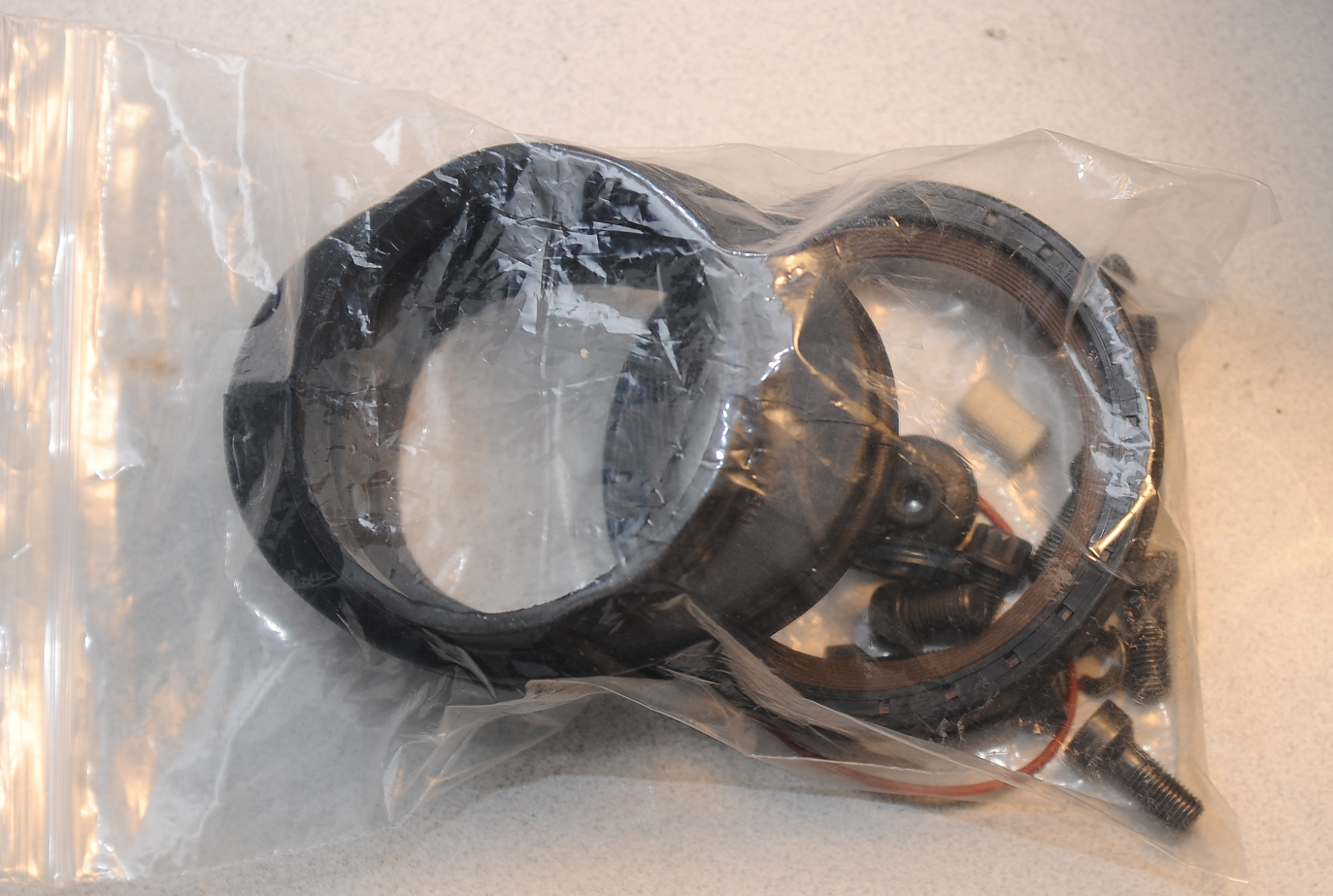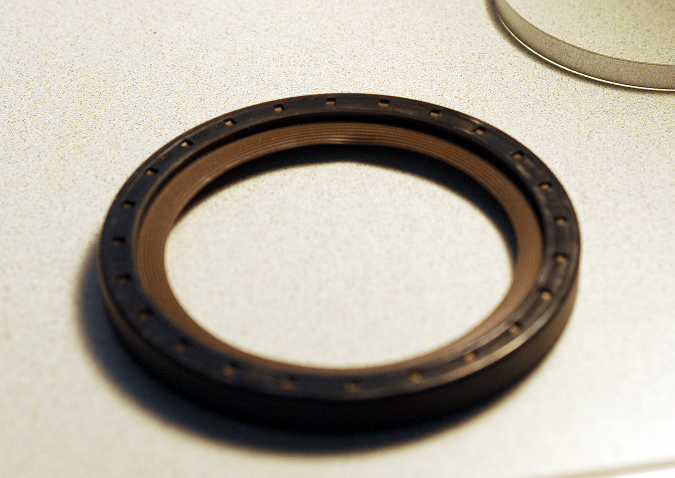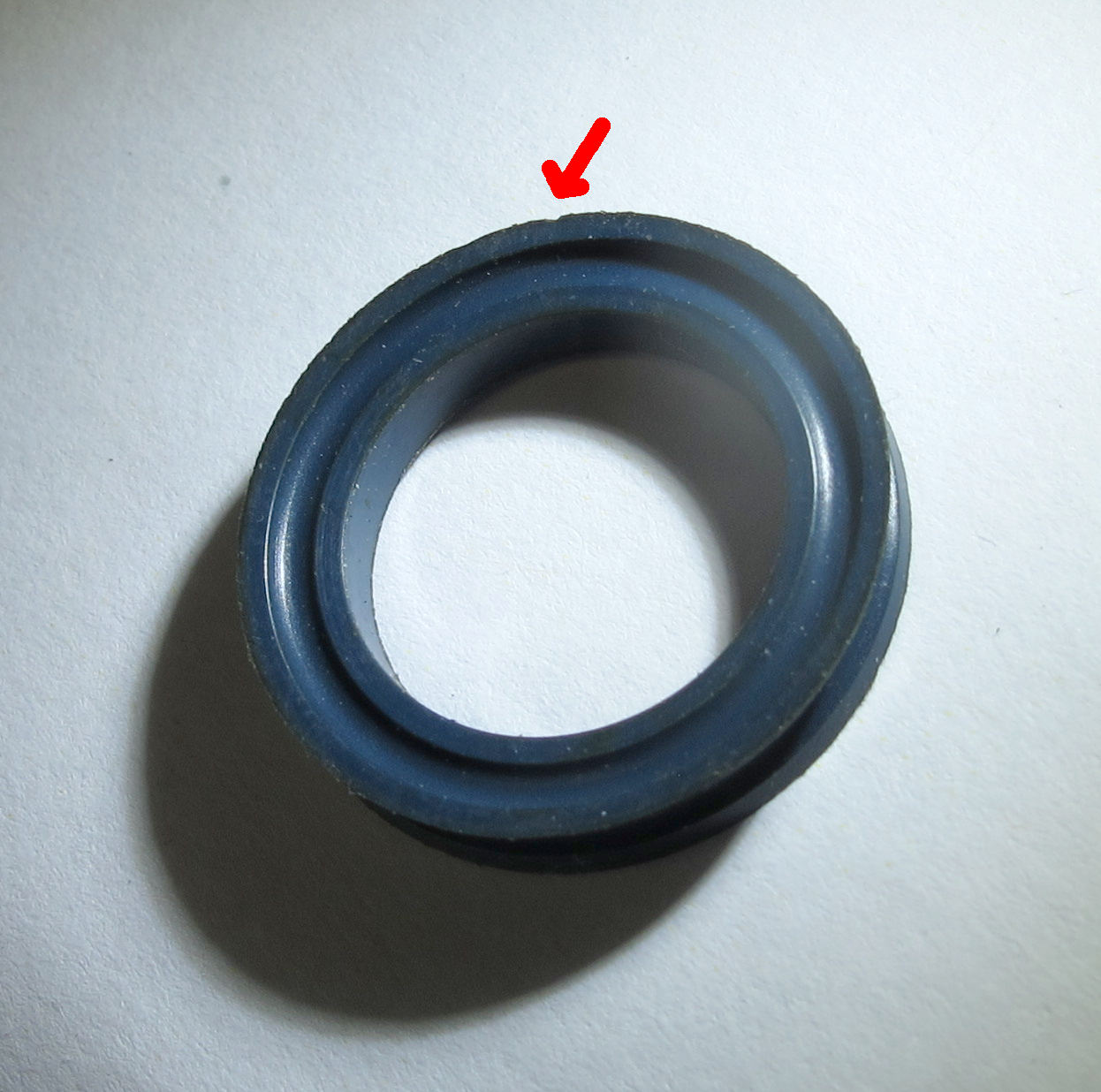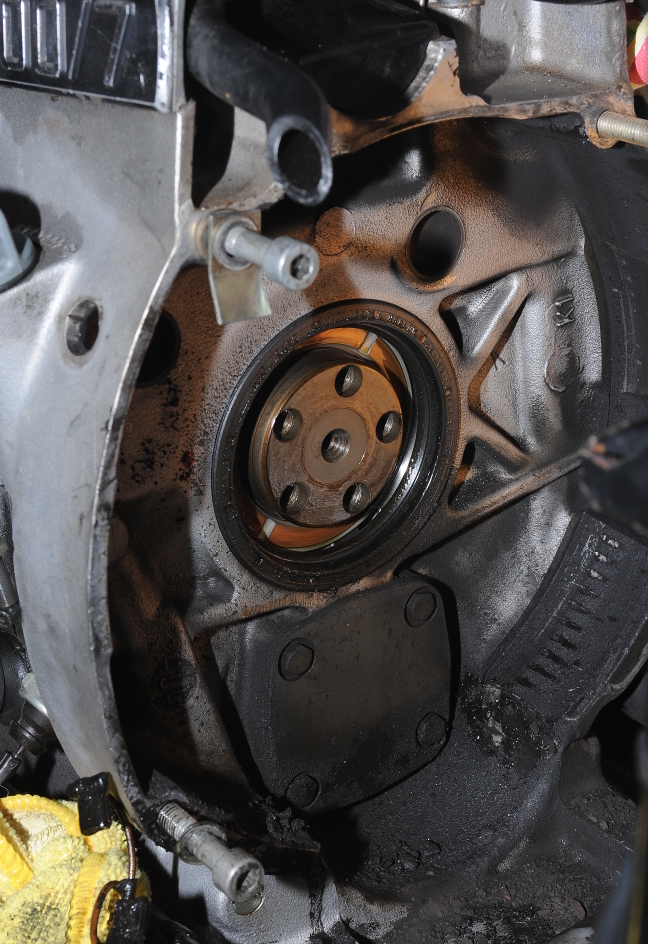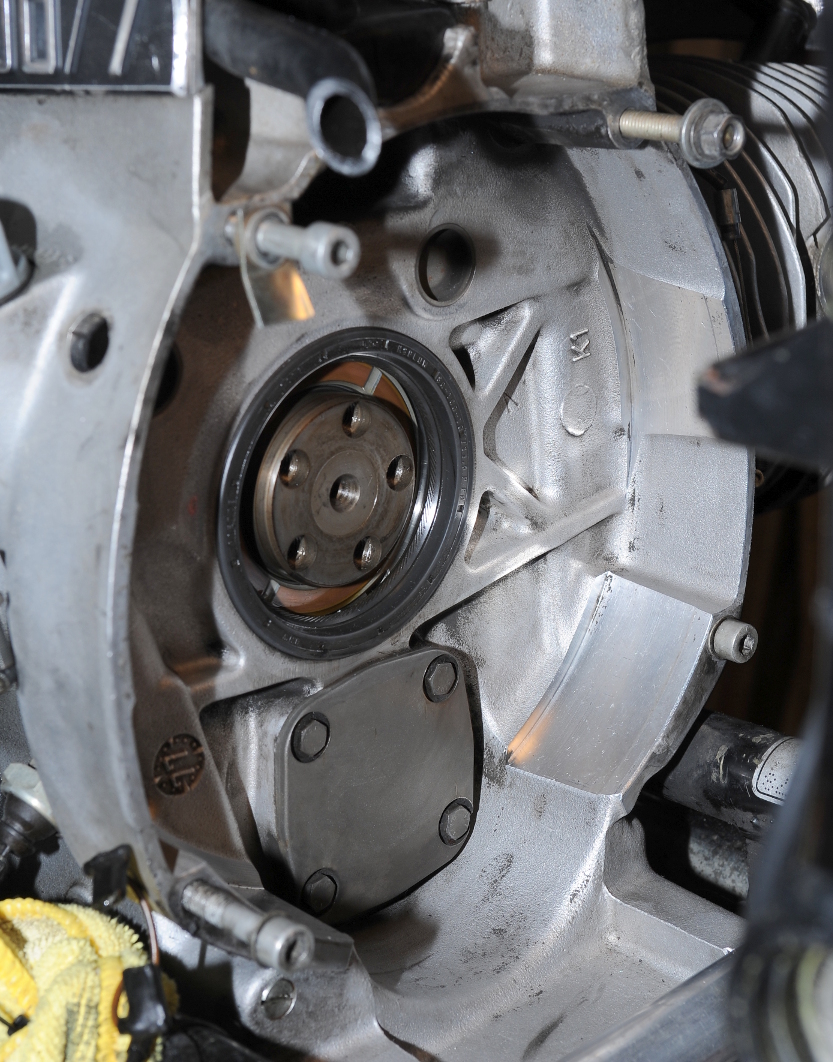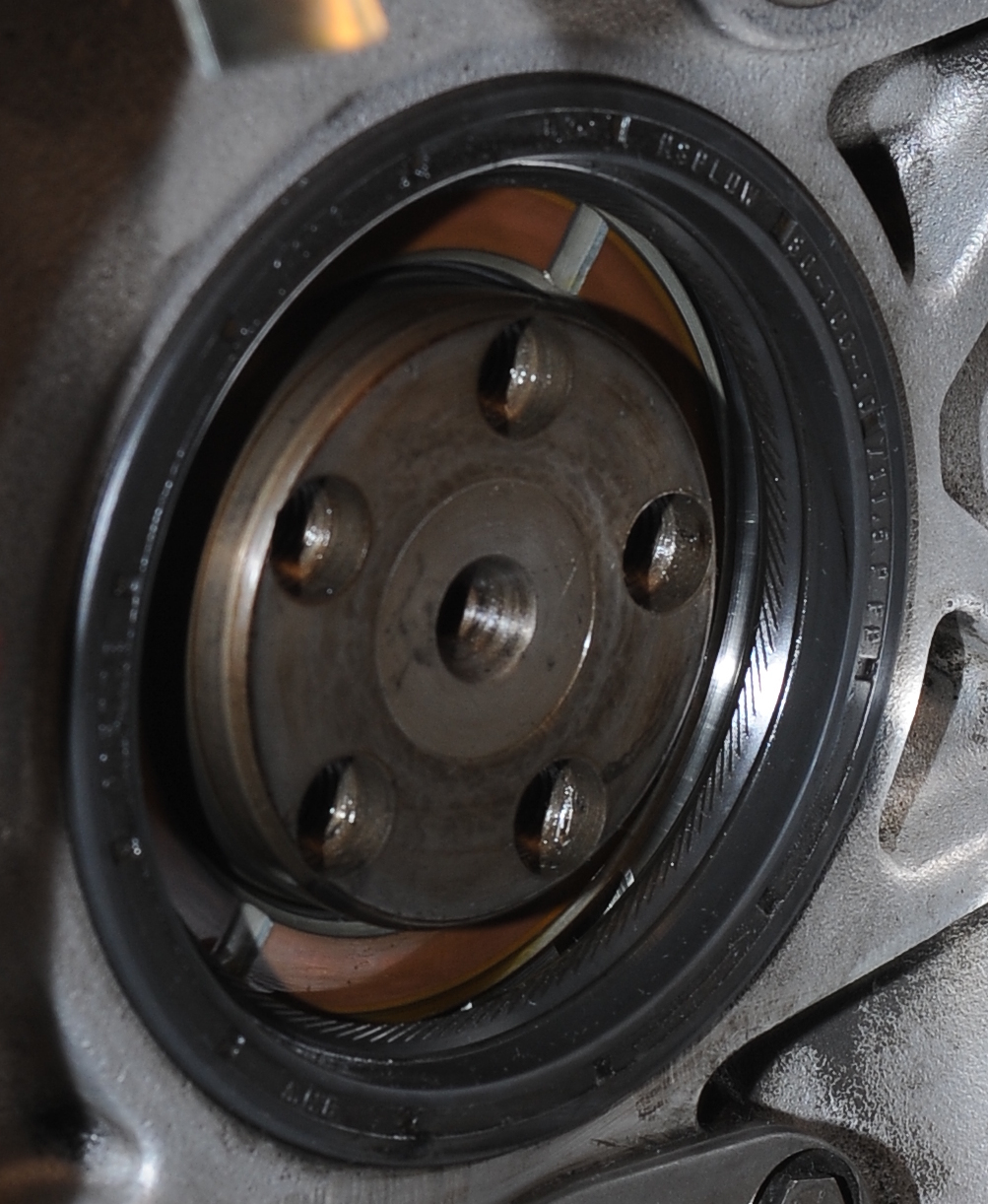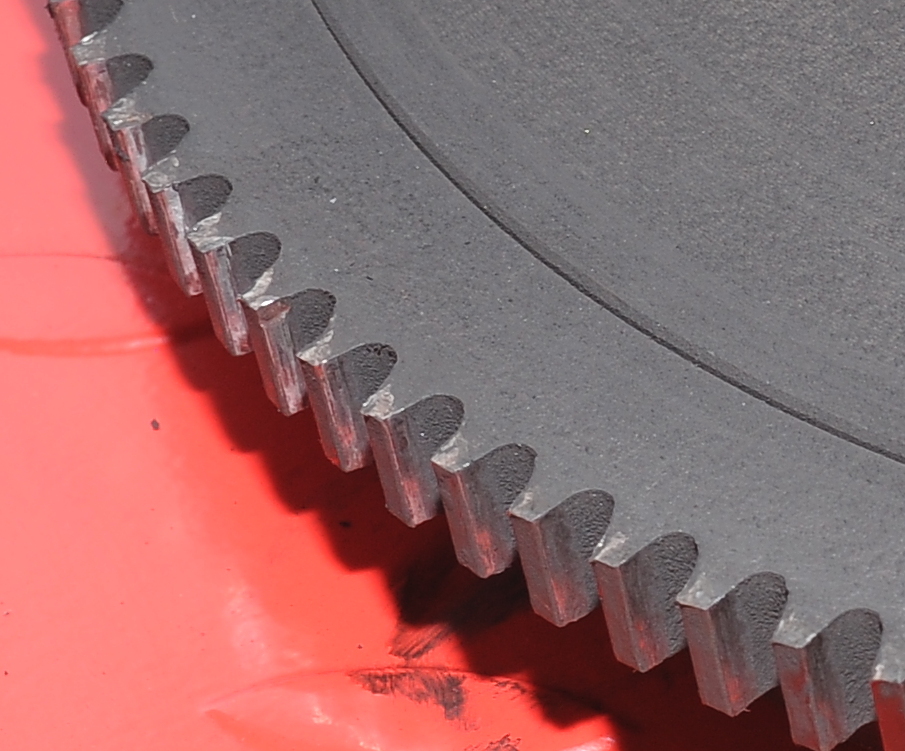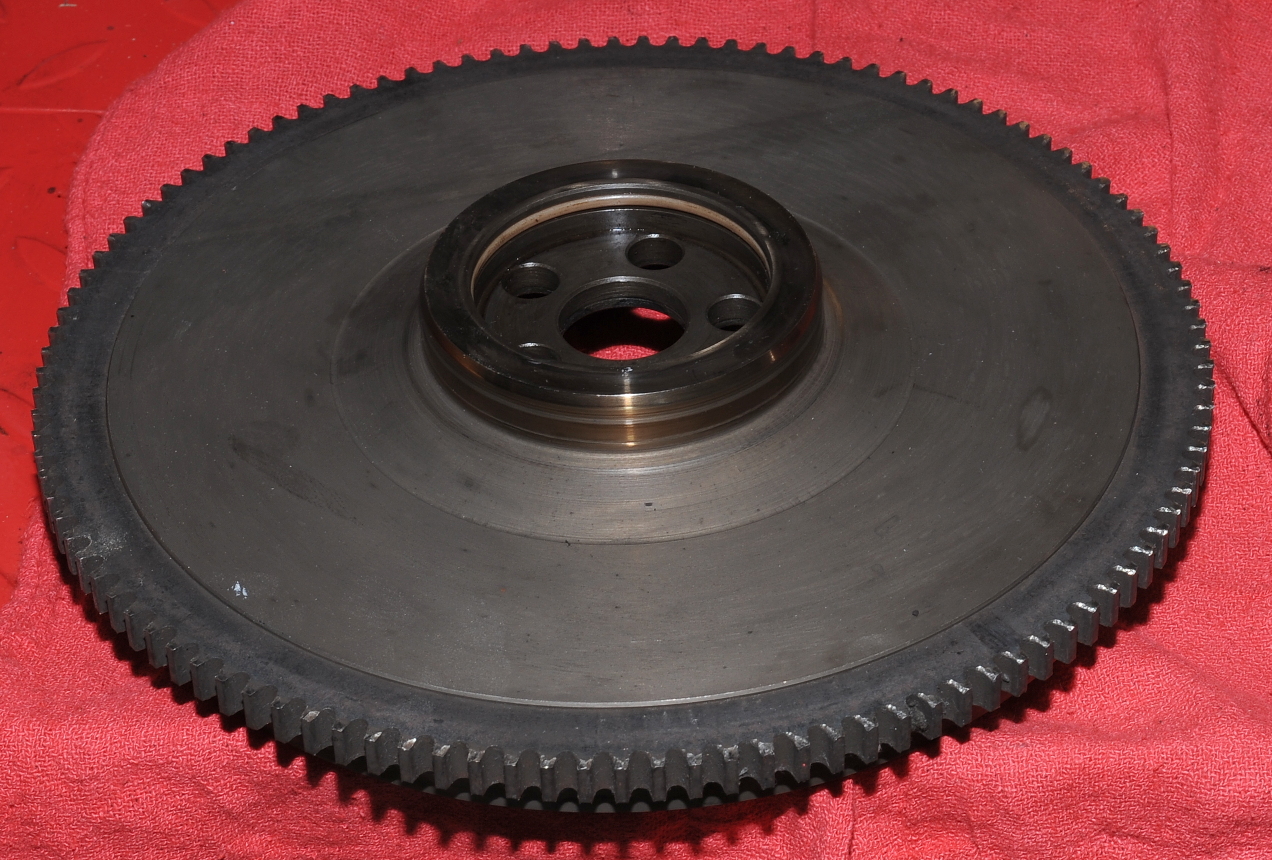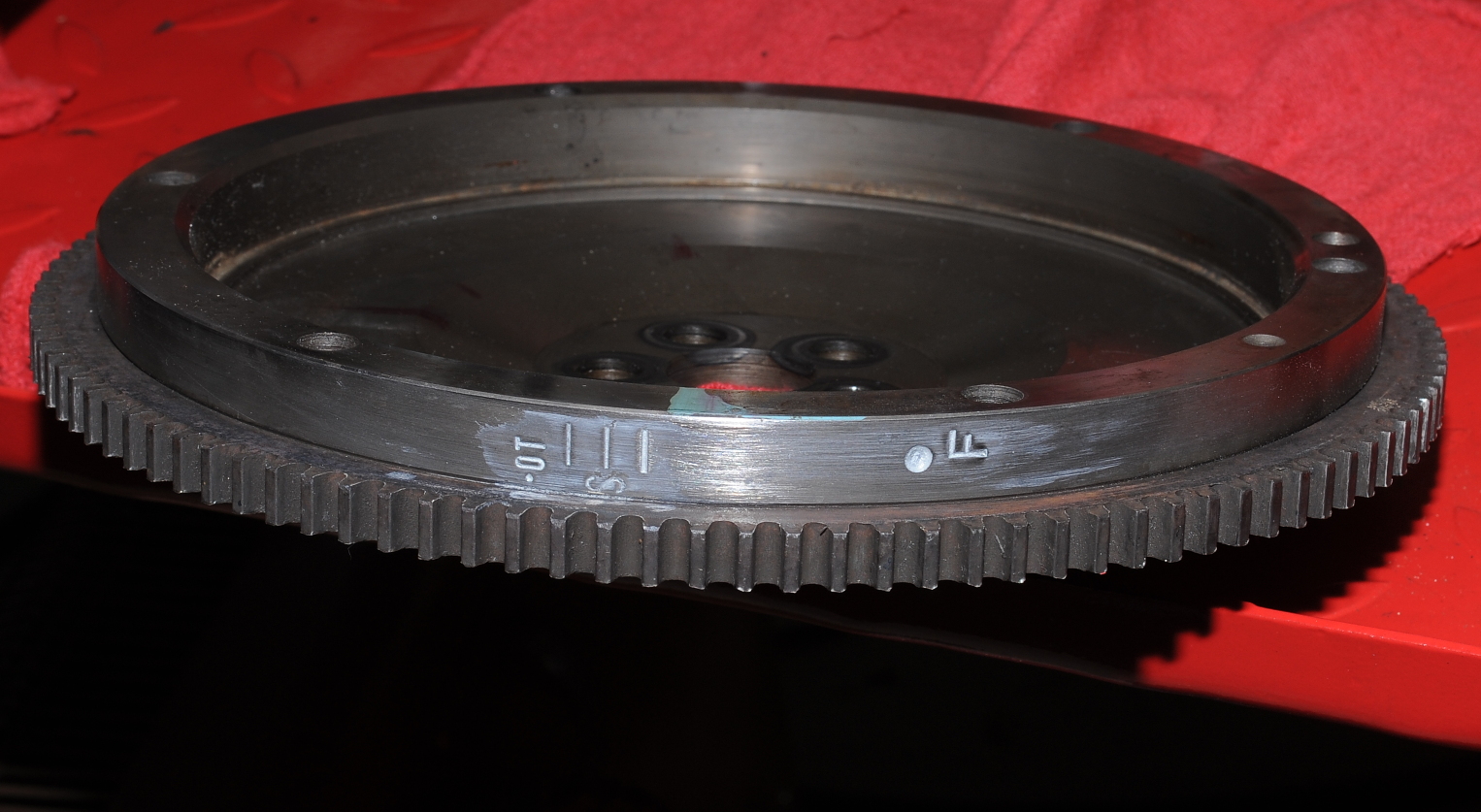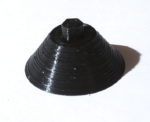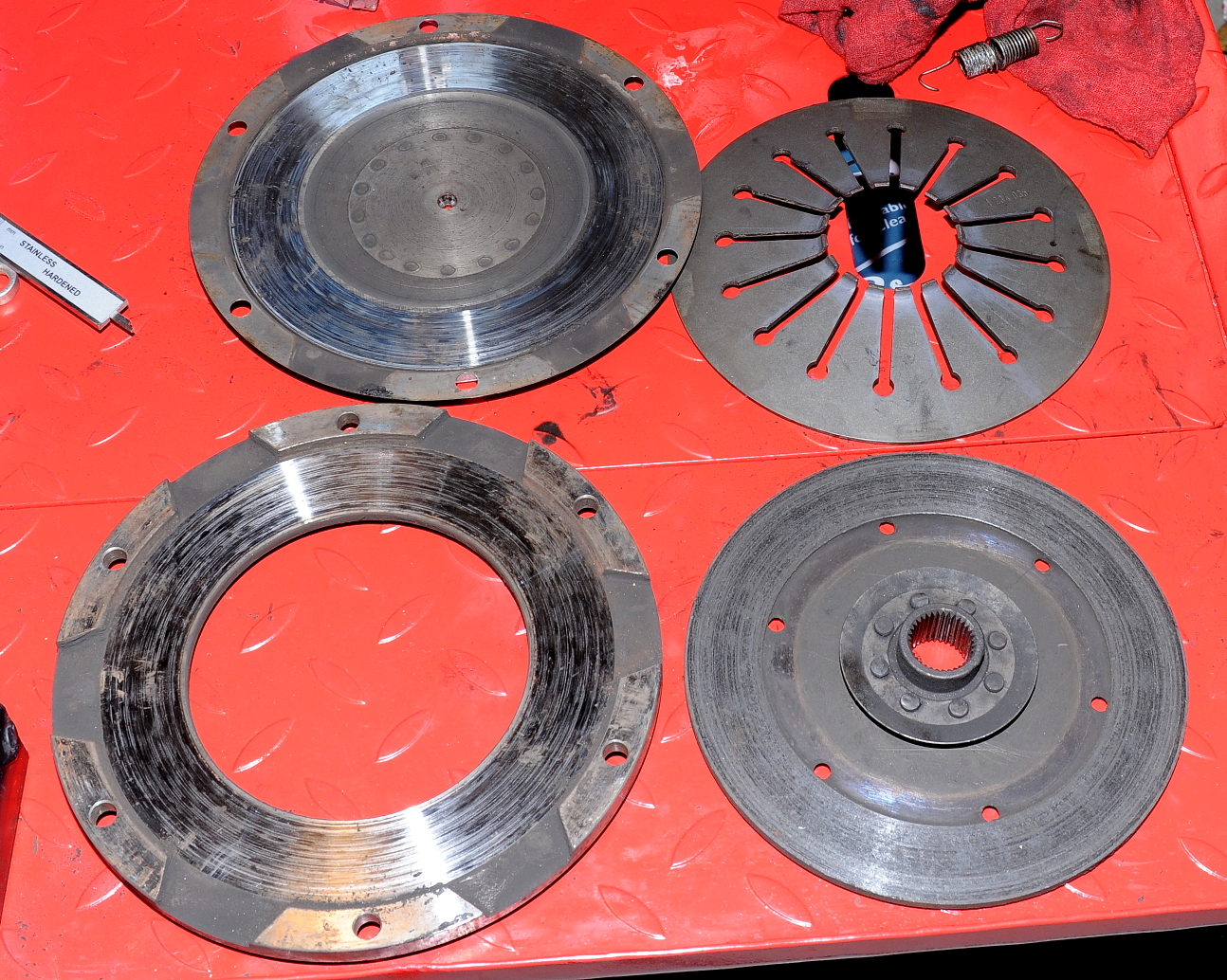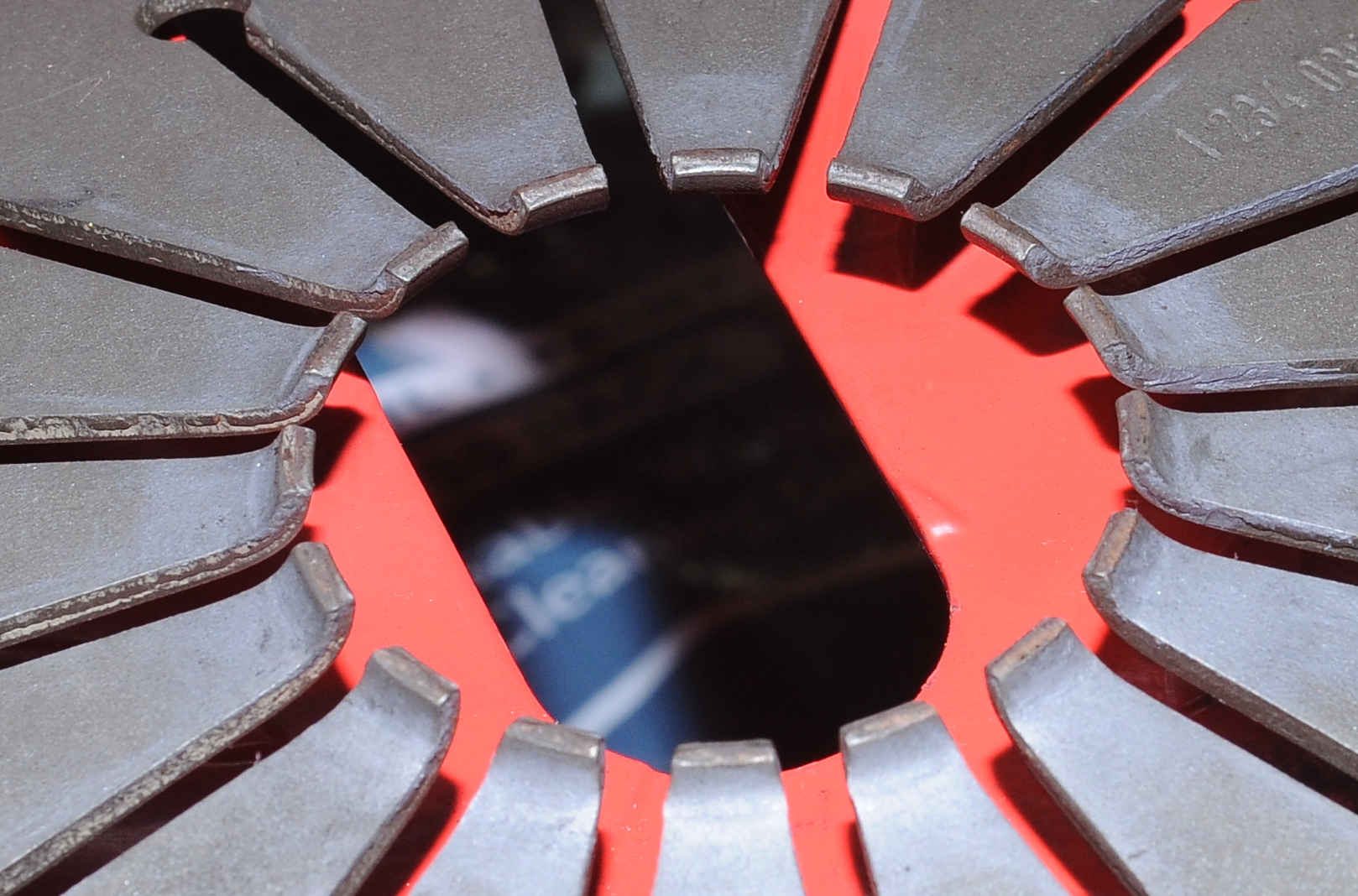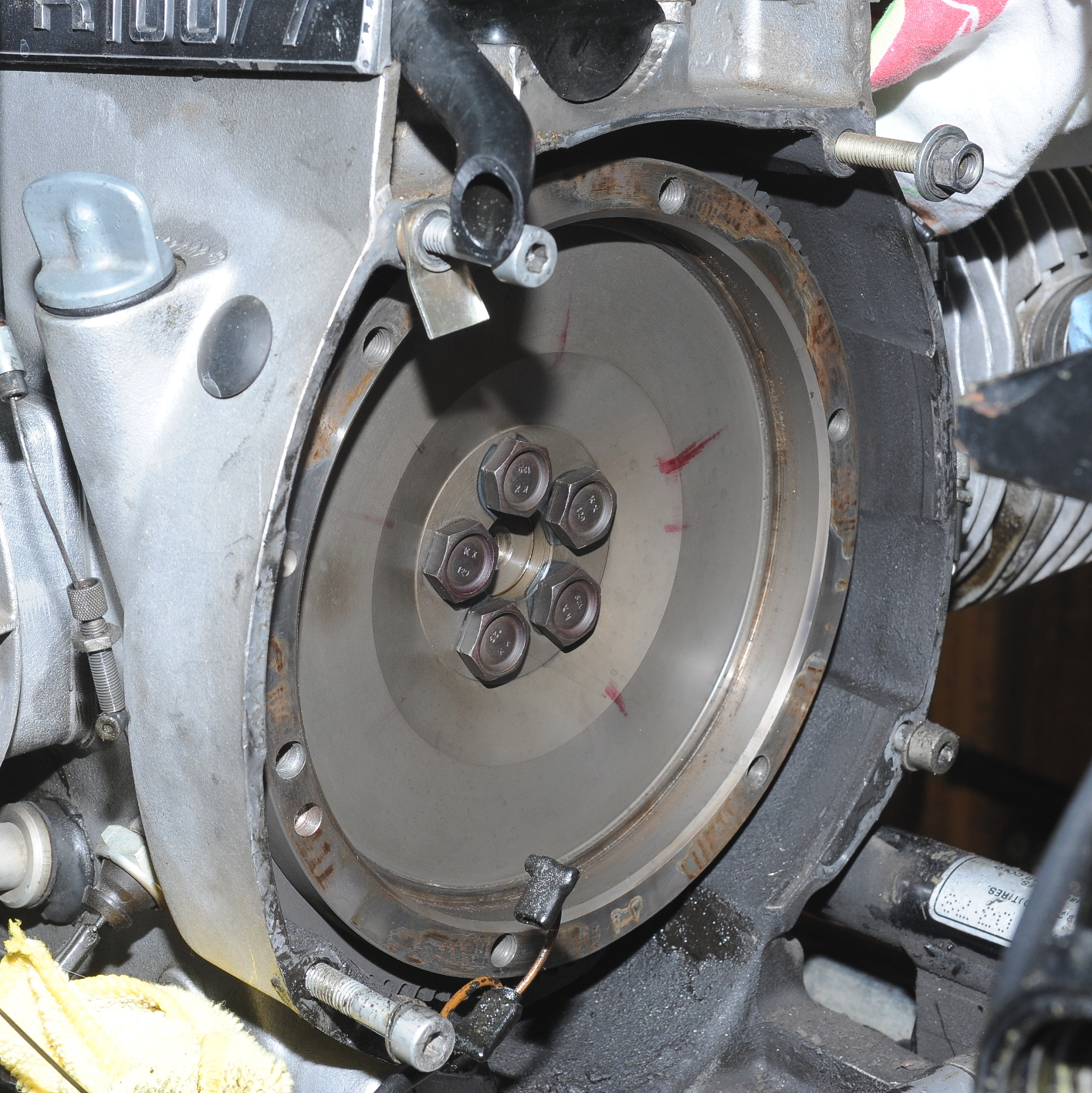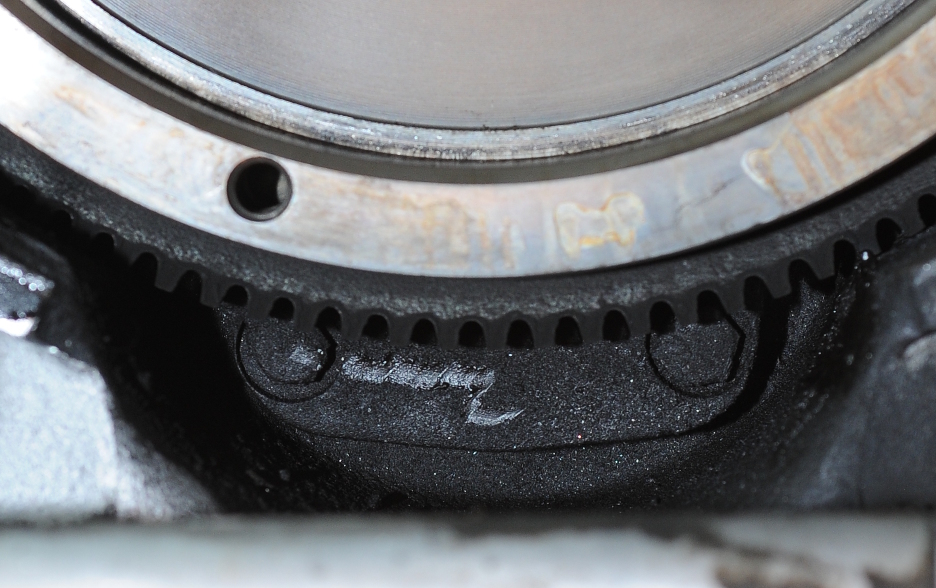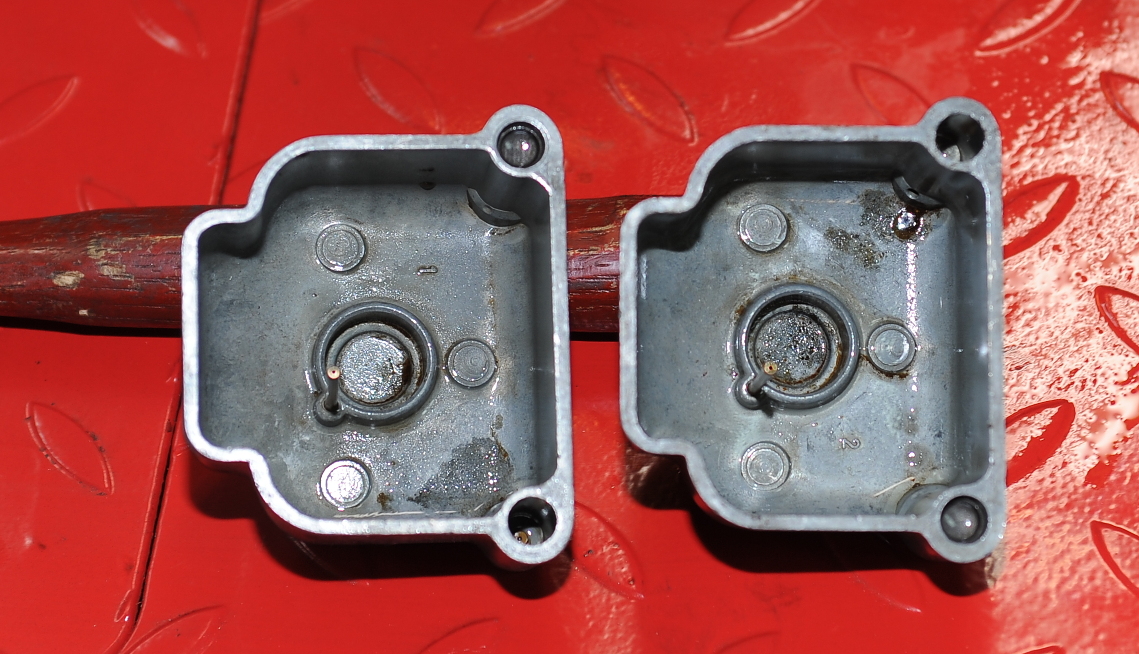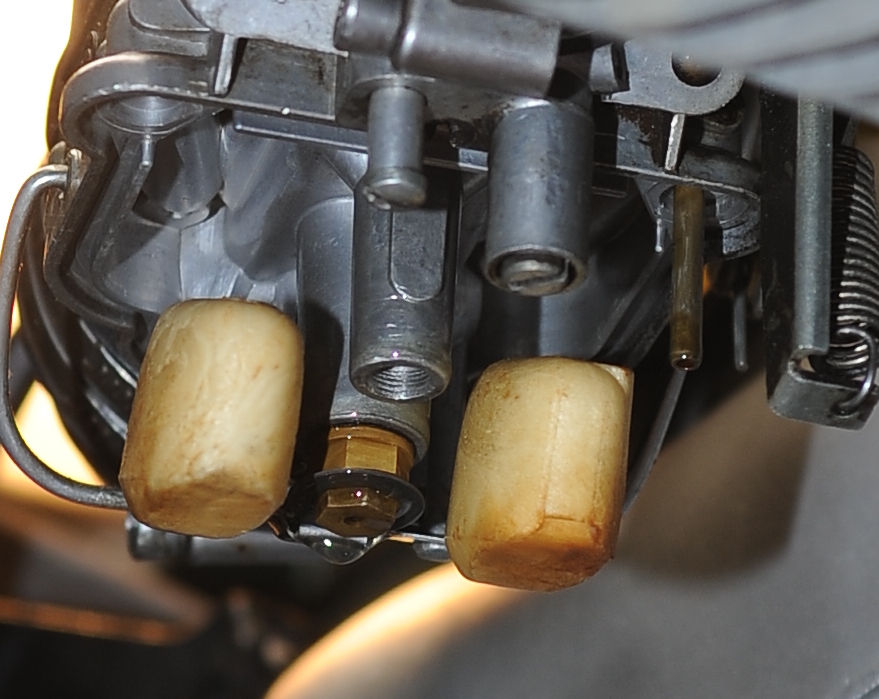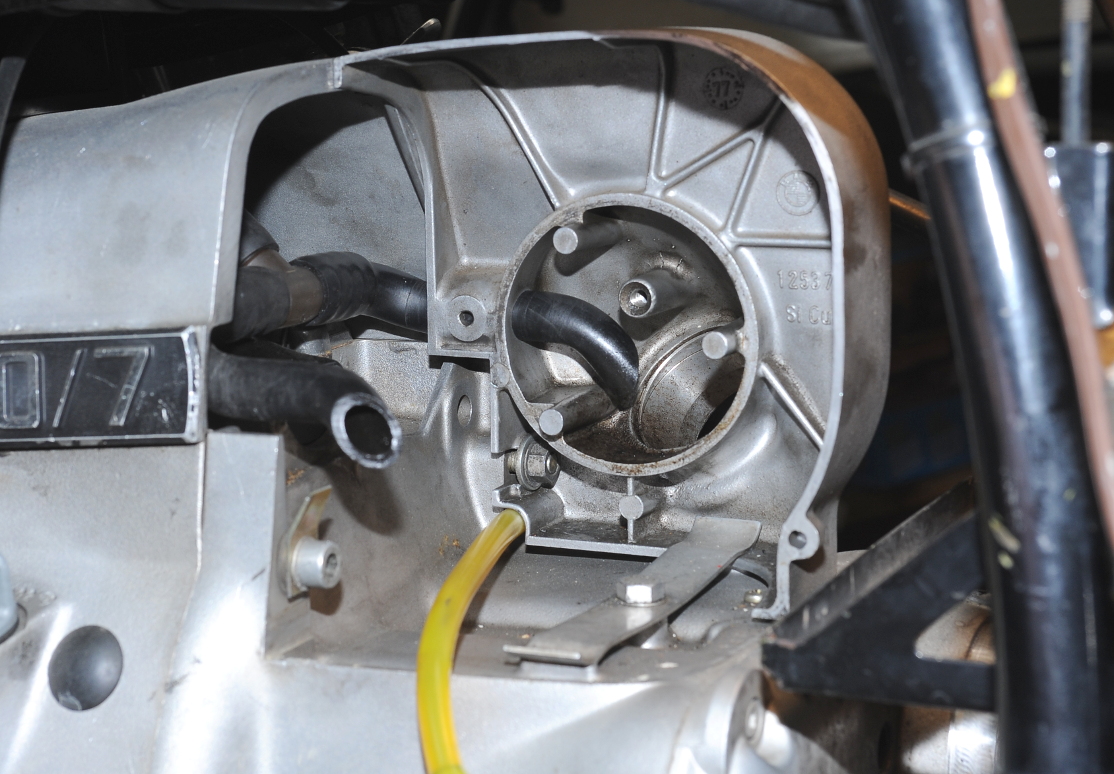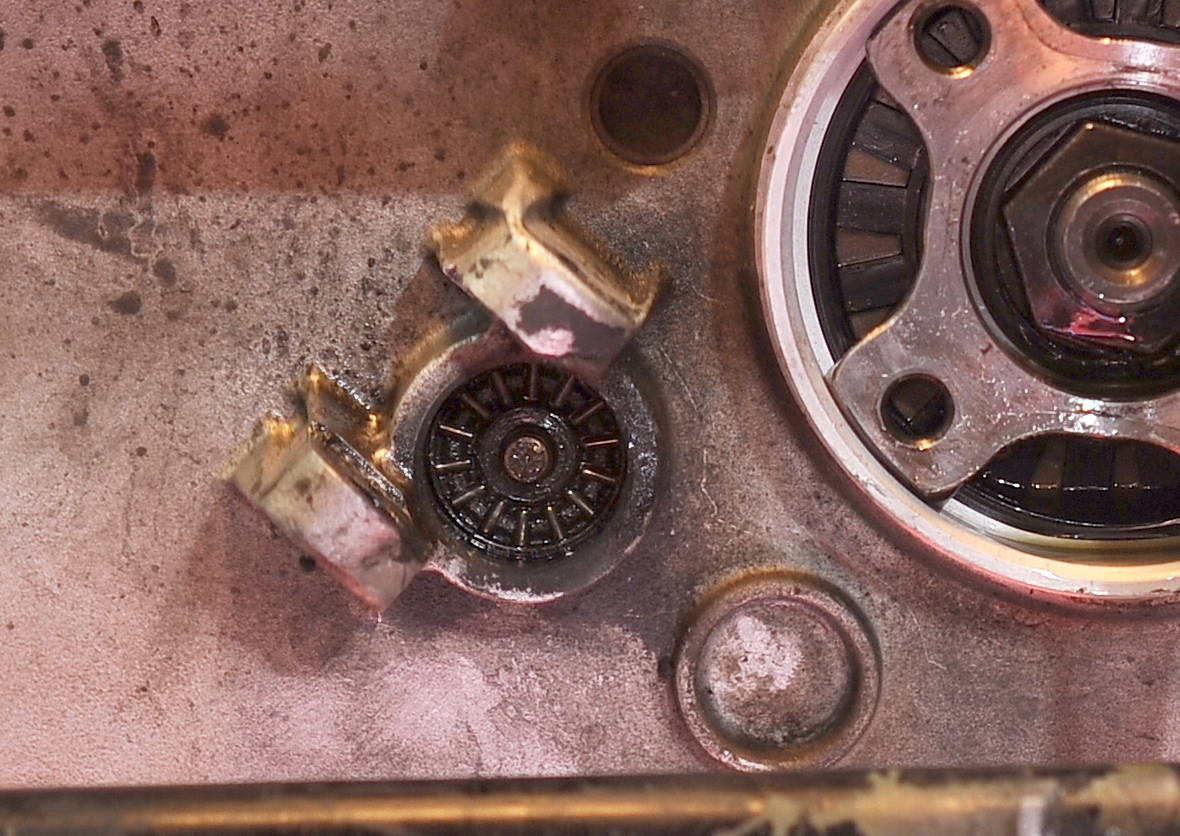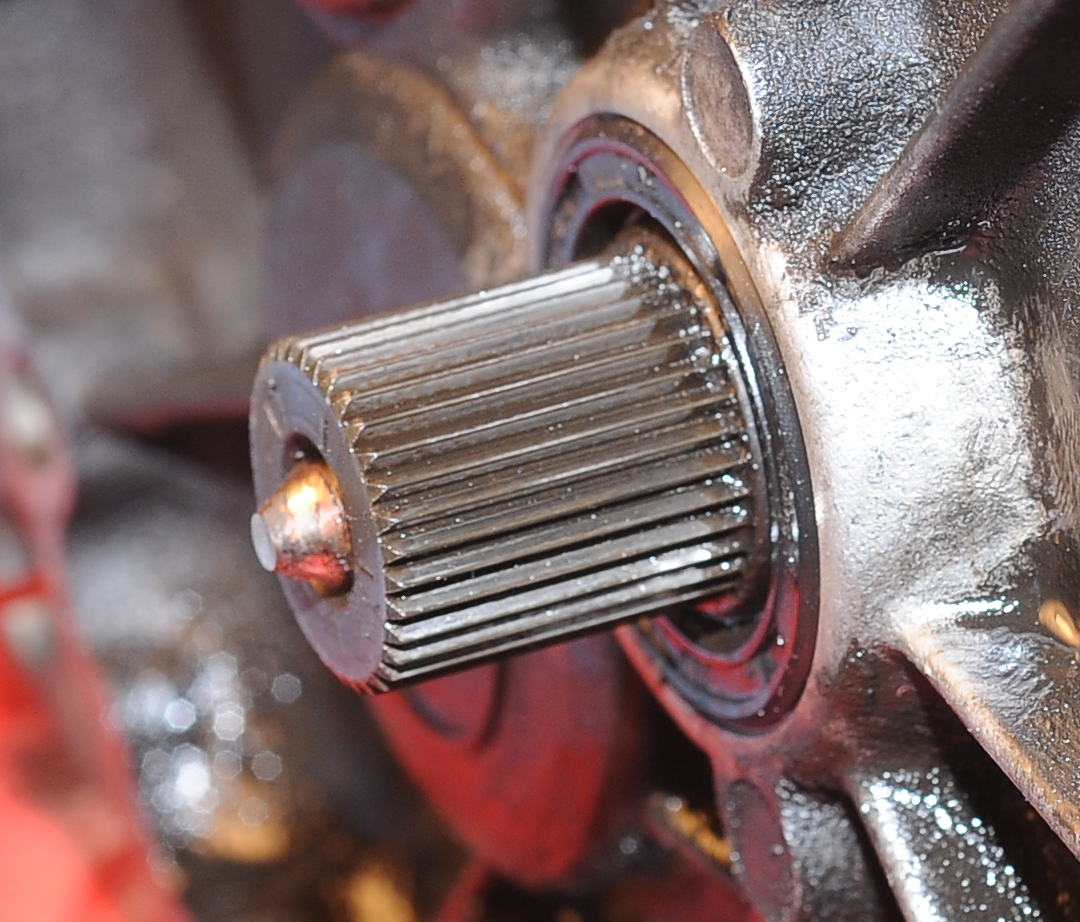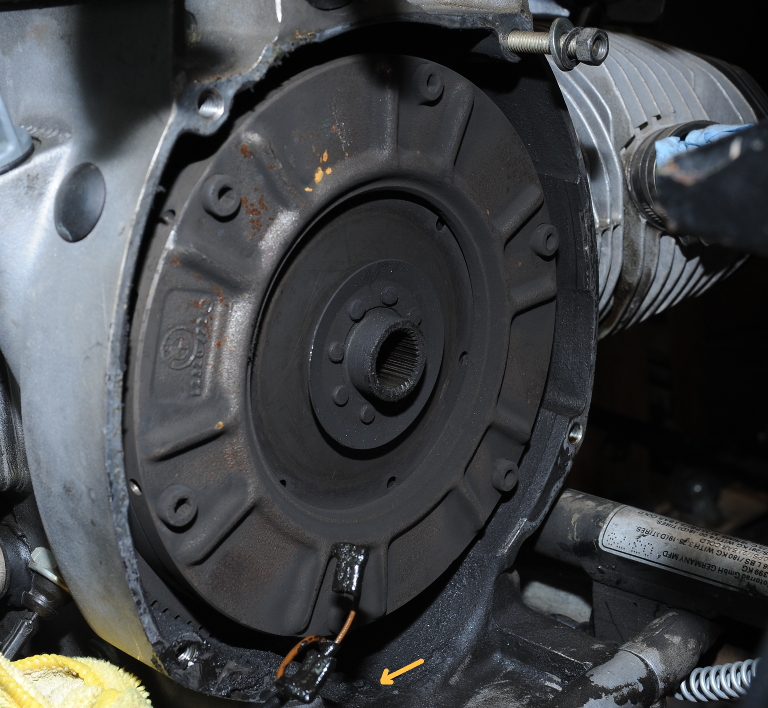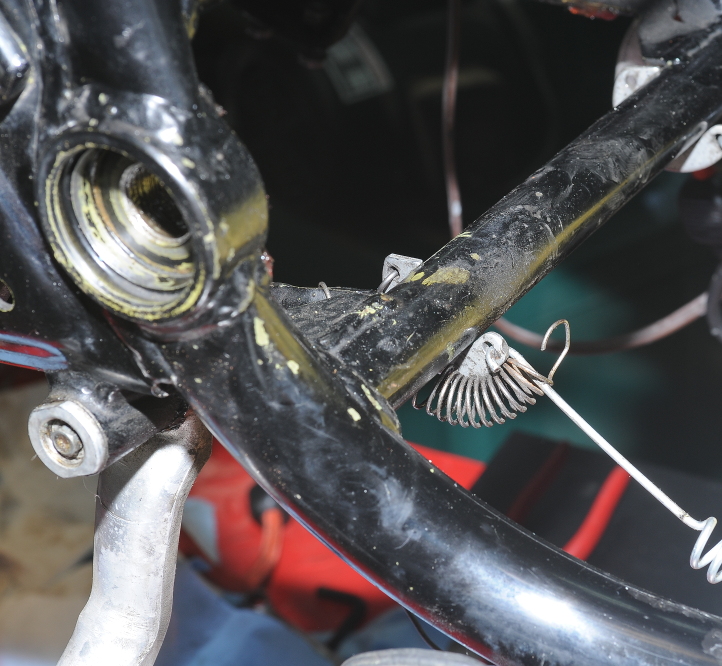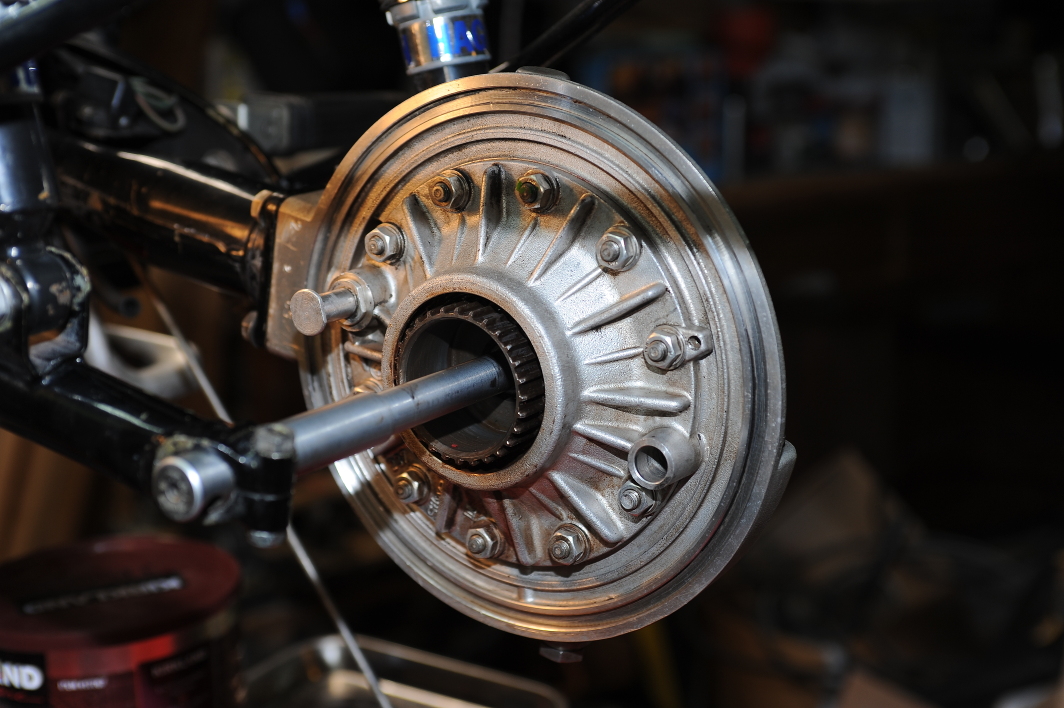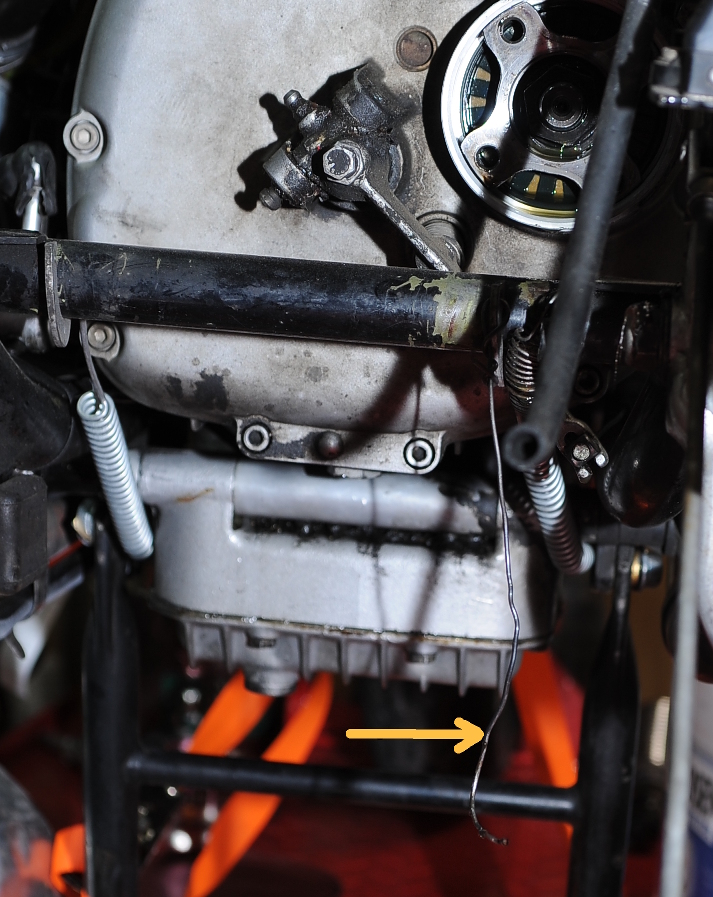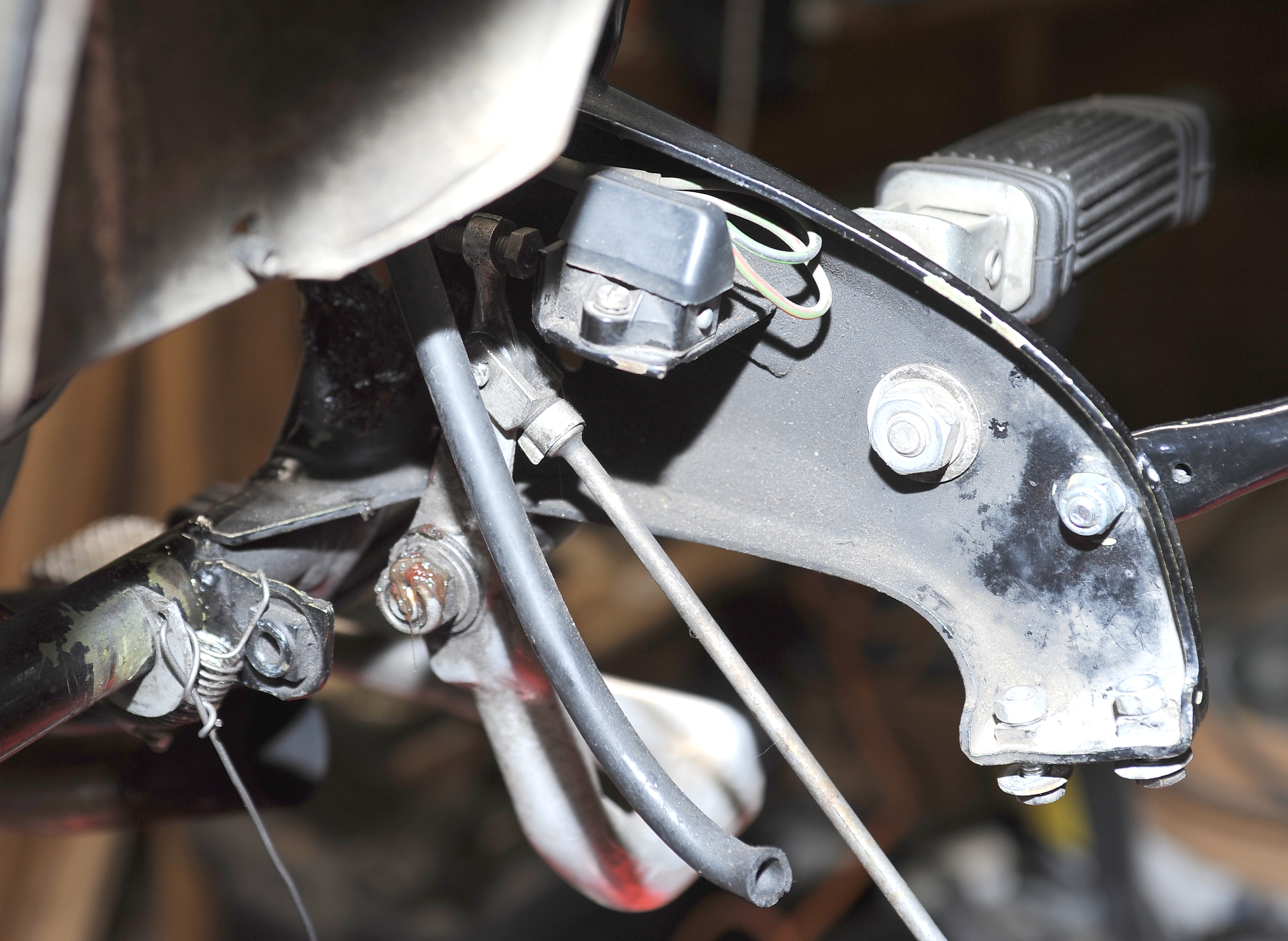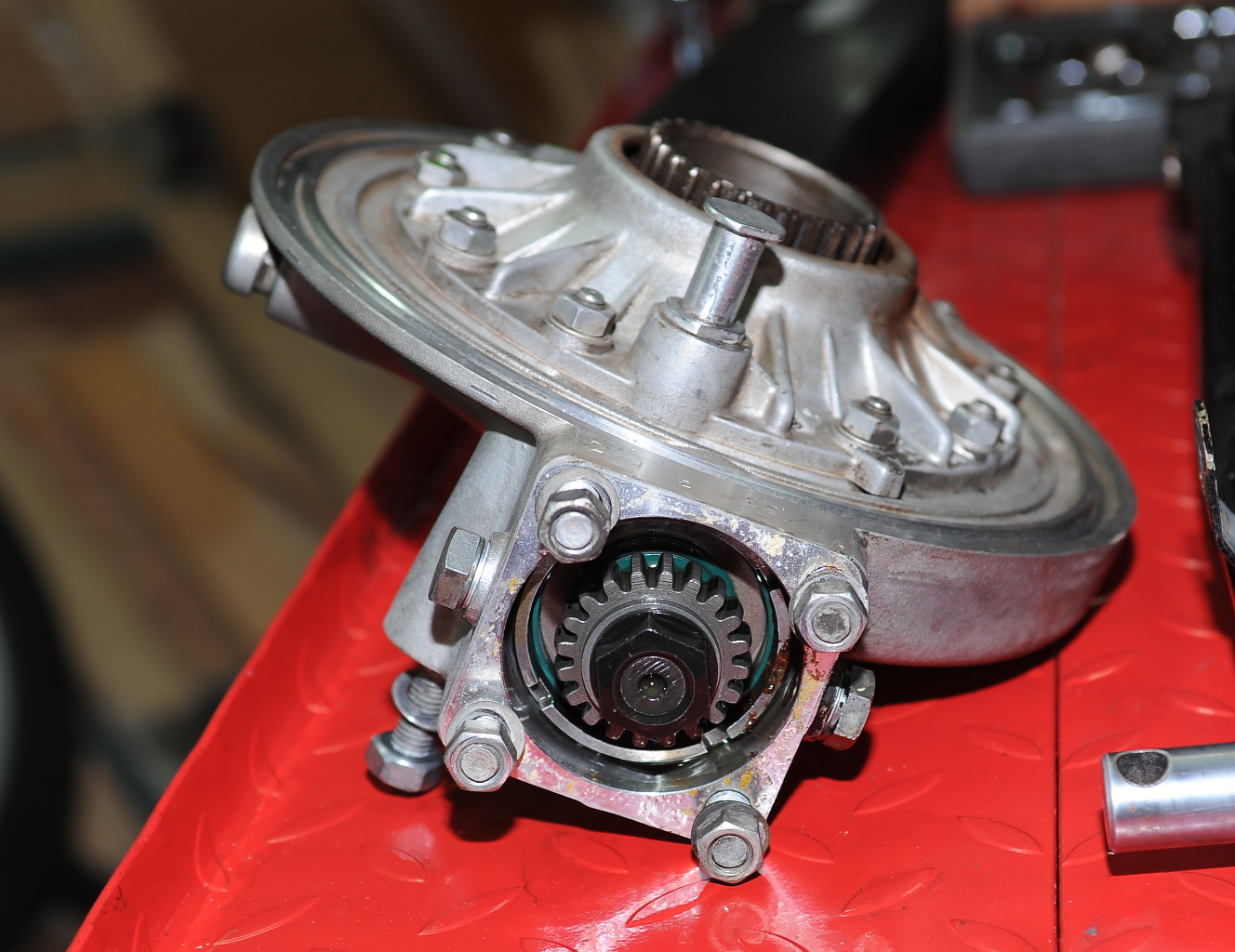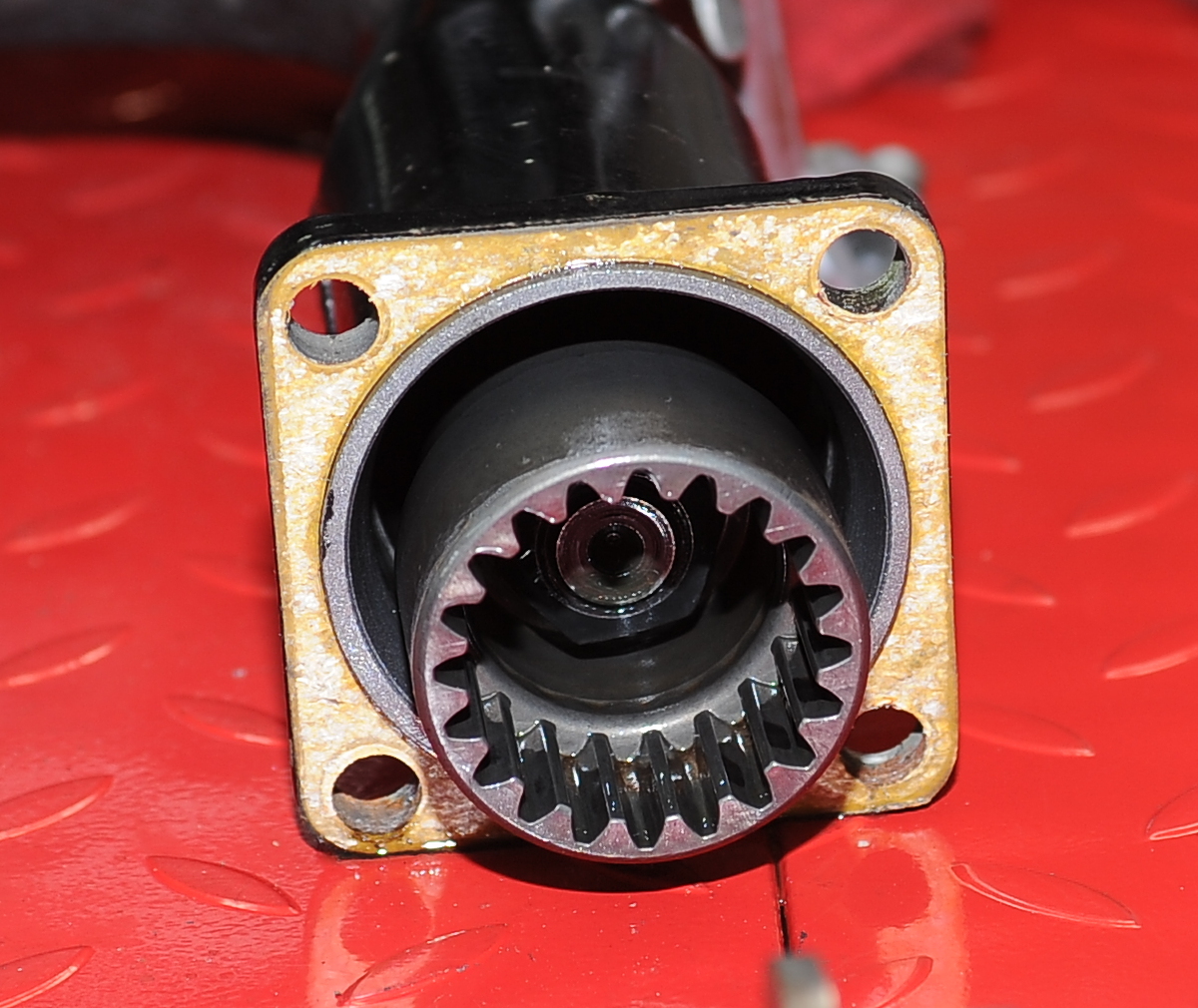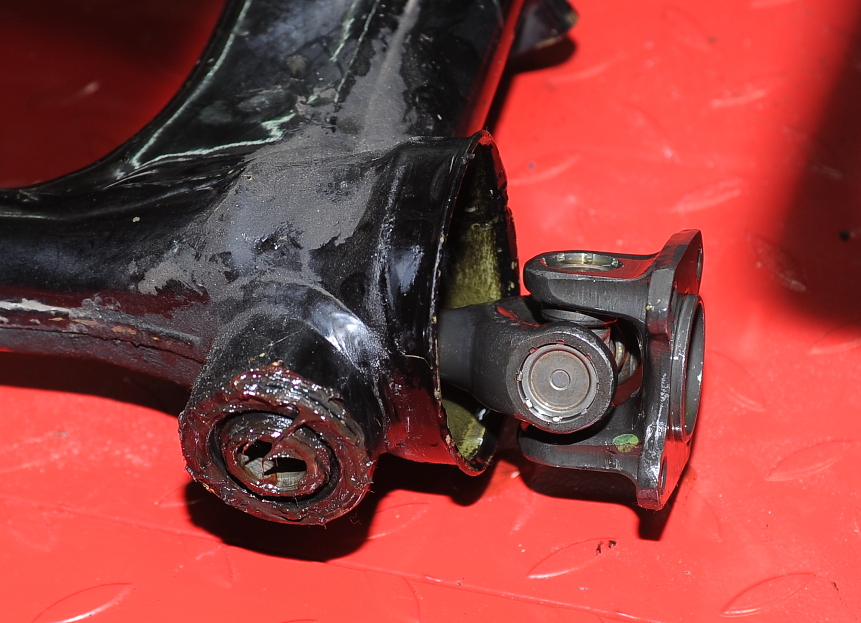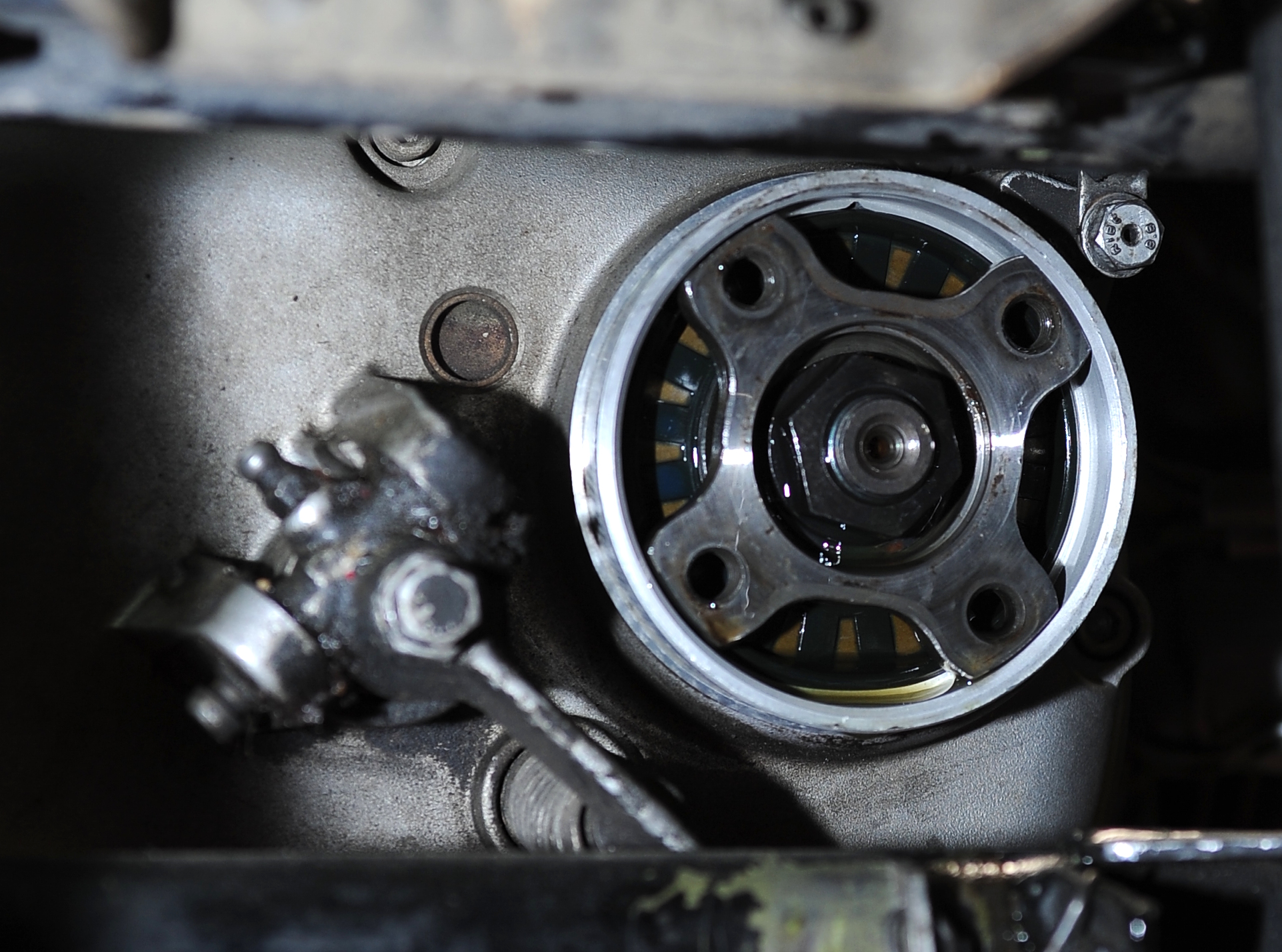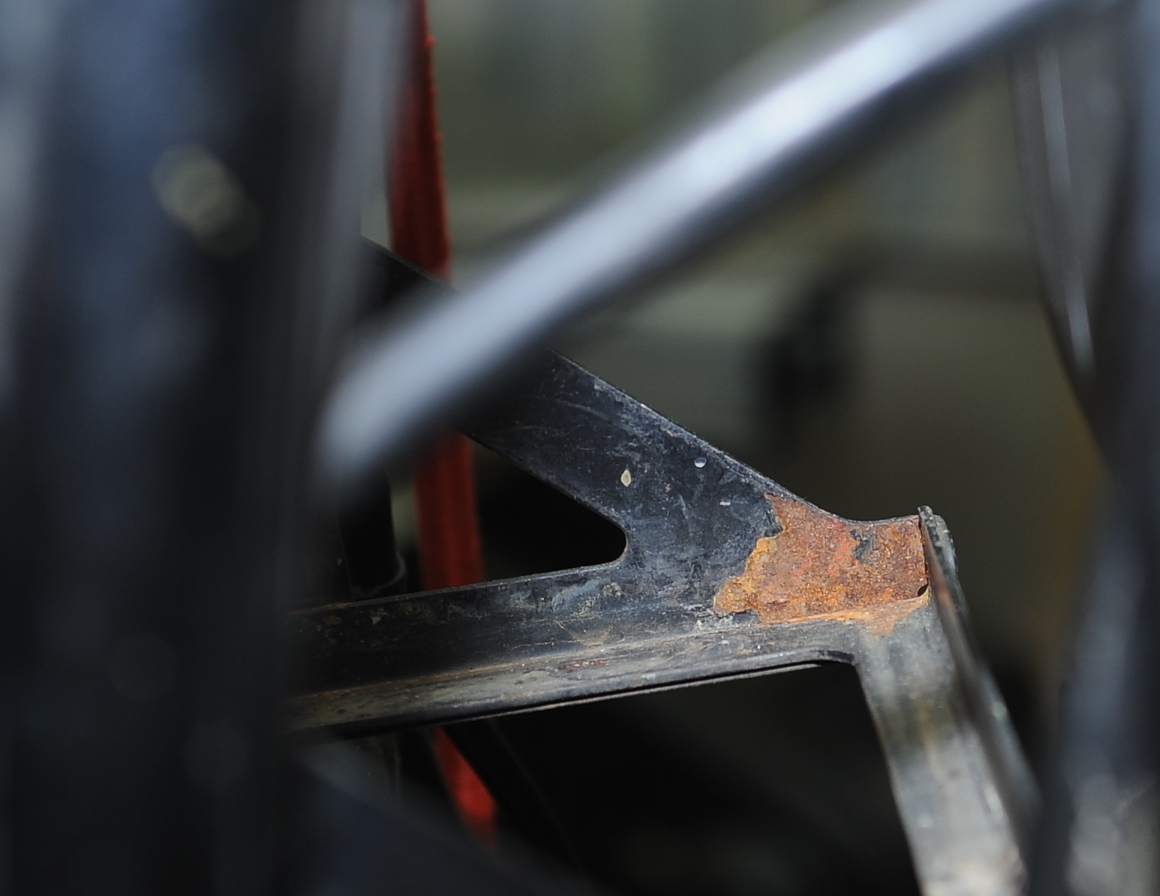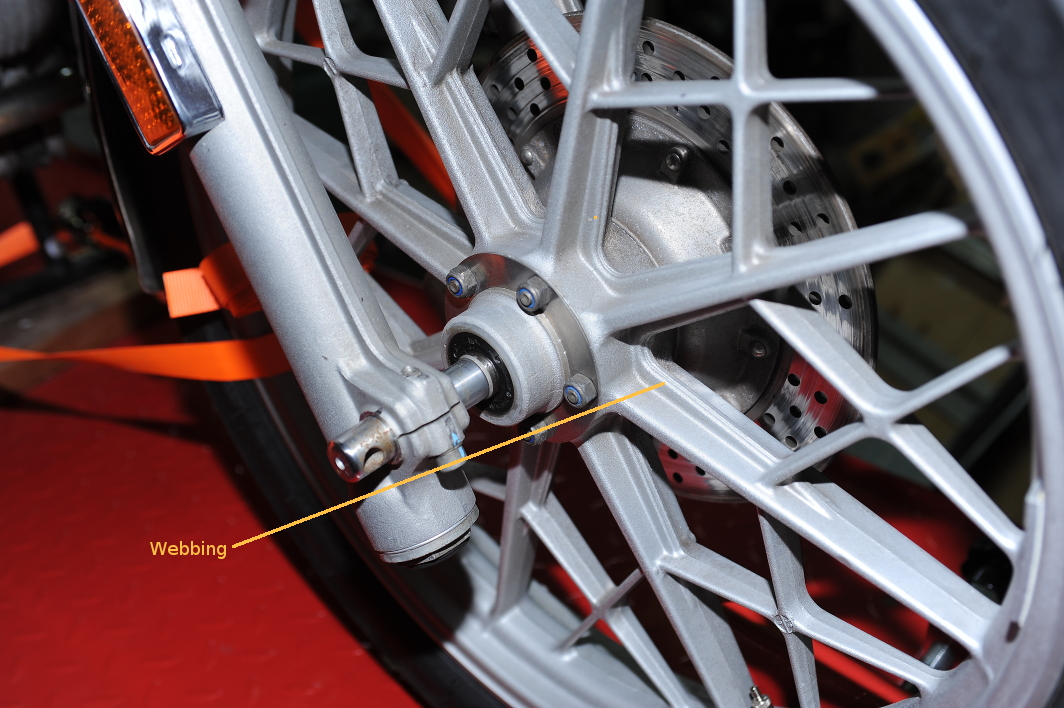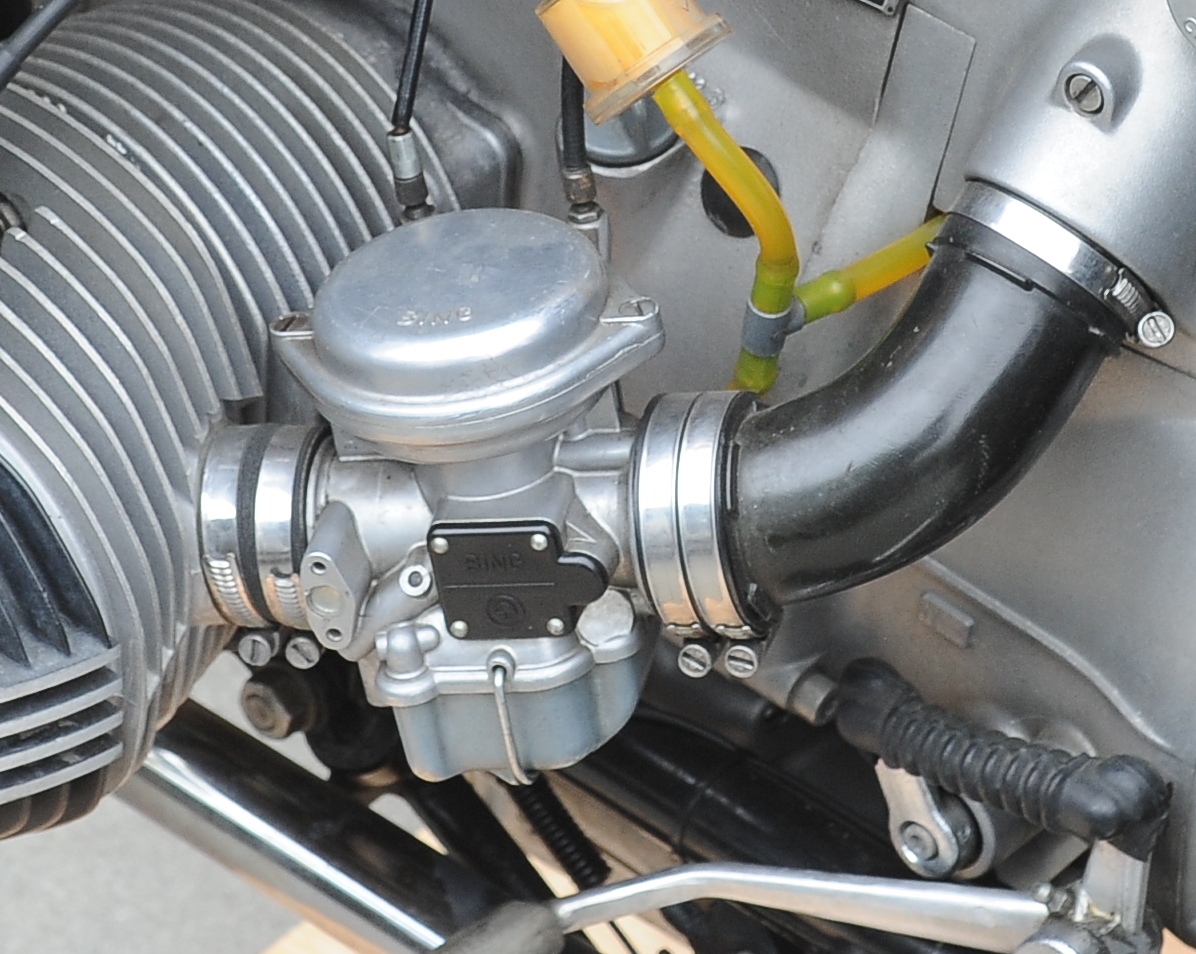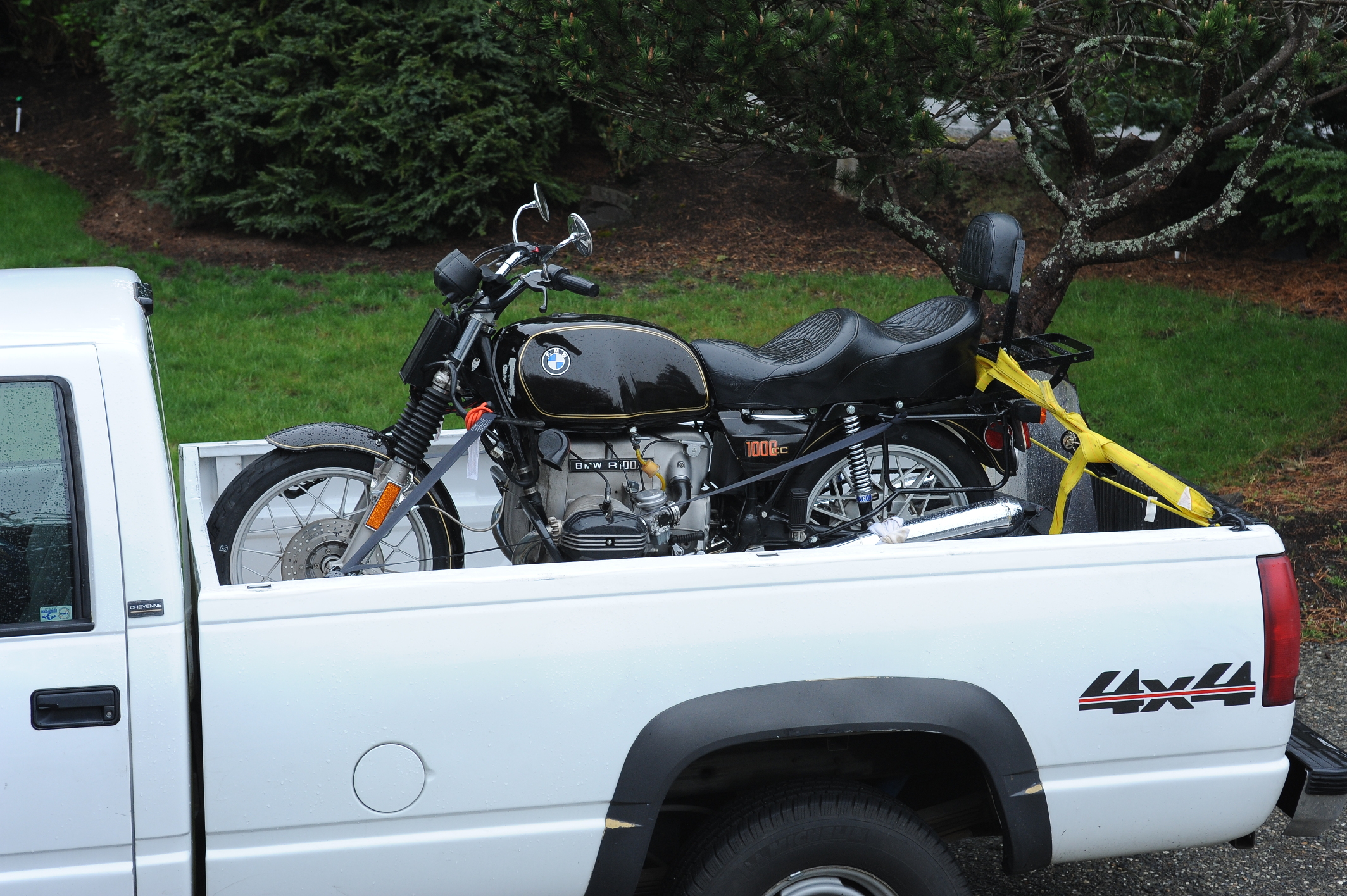As I expect this project to take a while, and I wanted it to be fun, I splurged and purchased a 1000lb motorcycle lift from Harbor Freight Tools. It was on sale for $329. It only took a few minutes to assemble the lift which came mostly assembled in a huge, and very heavy wooden crate. I took the windshield and right mirror off to allow me to run the table up to its highest position.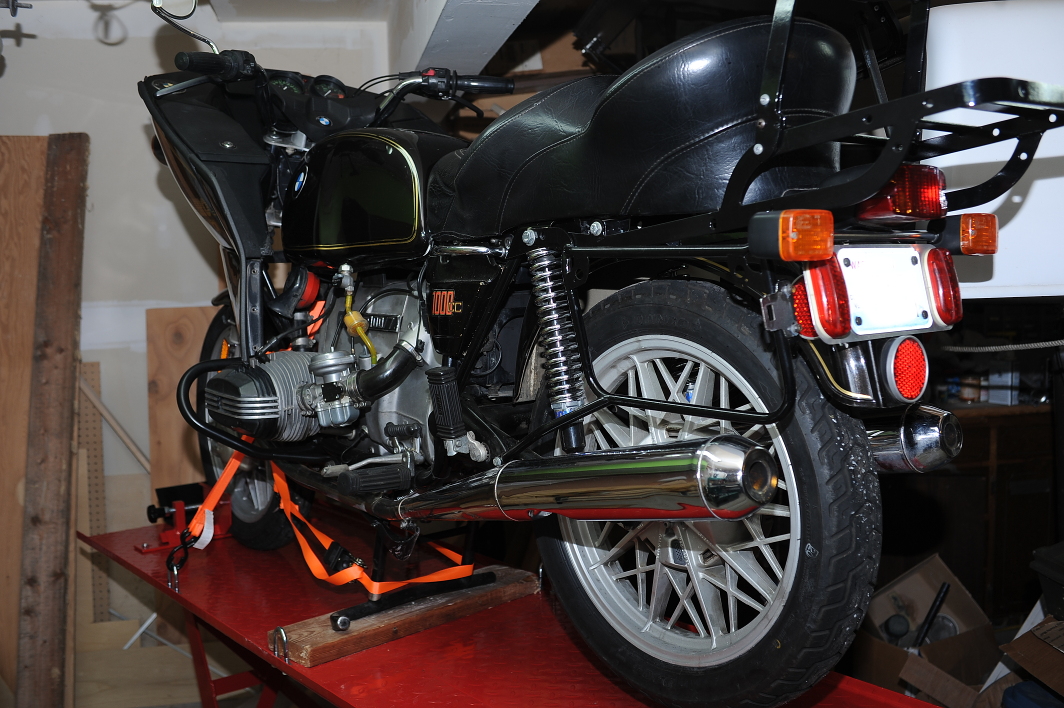
OK first new task discovered, replace the leaky neutral switch. See the drop of transmission oil on the left terminal?
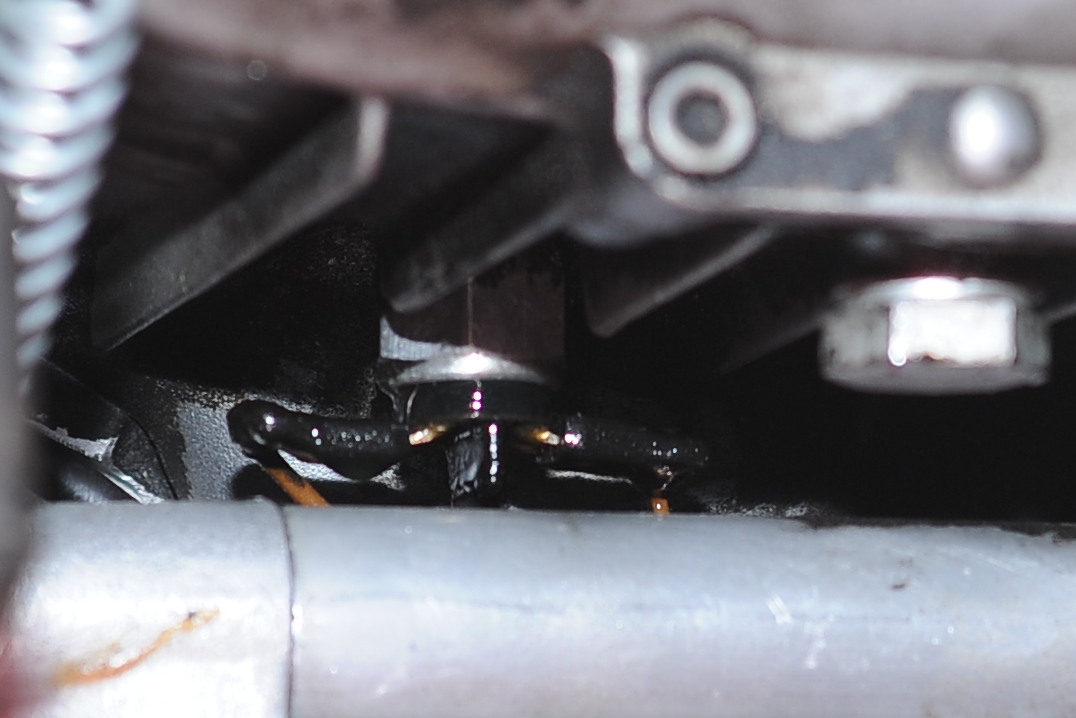
I spotted this oil-pan damage and repair before I bought the bike. When I get around to pulling the pan, I may try and make to improve on the repair. There are two spots with damage.
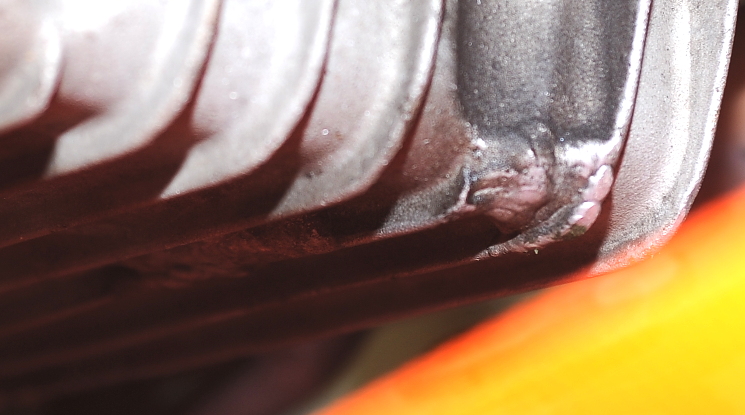
My first task was to remove the mufflers. They came off nice and easy, though I did discover that one of the captive nuts on the right muffler bracket (frame side) had stripped, so someone added 10mm nuts backing the captive nuts on three of the four bolts. I’ll probably leave that solution as-is.
With the mufflers out of the way, it was time to remove the rear wheel. I didn’t pull the fender, which prevented me from getting the wheel out until I removed the hydraulics access panel in the lift. That gave me just enough room to drop the tire away from the bike.
With the wheel out, it was pretty obvious that the splines are worn, and while they aren’t likely to fail immediately, I’m thinking I should look into having the splines repaired. While it’s a bit hard to see through the grease, the wheel splines aren’t too bad. As expected, the wheel bearings are shot. However the outer races don’t appear to have spun, they’re press-fit in, so the hub should be in good shape. Just needs new tapered roller bearings.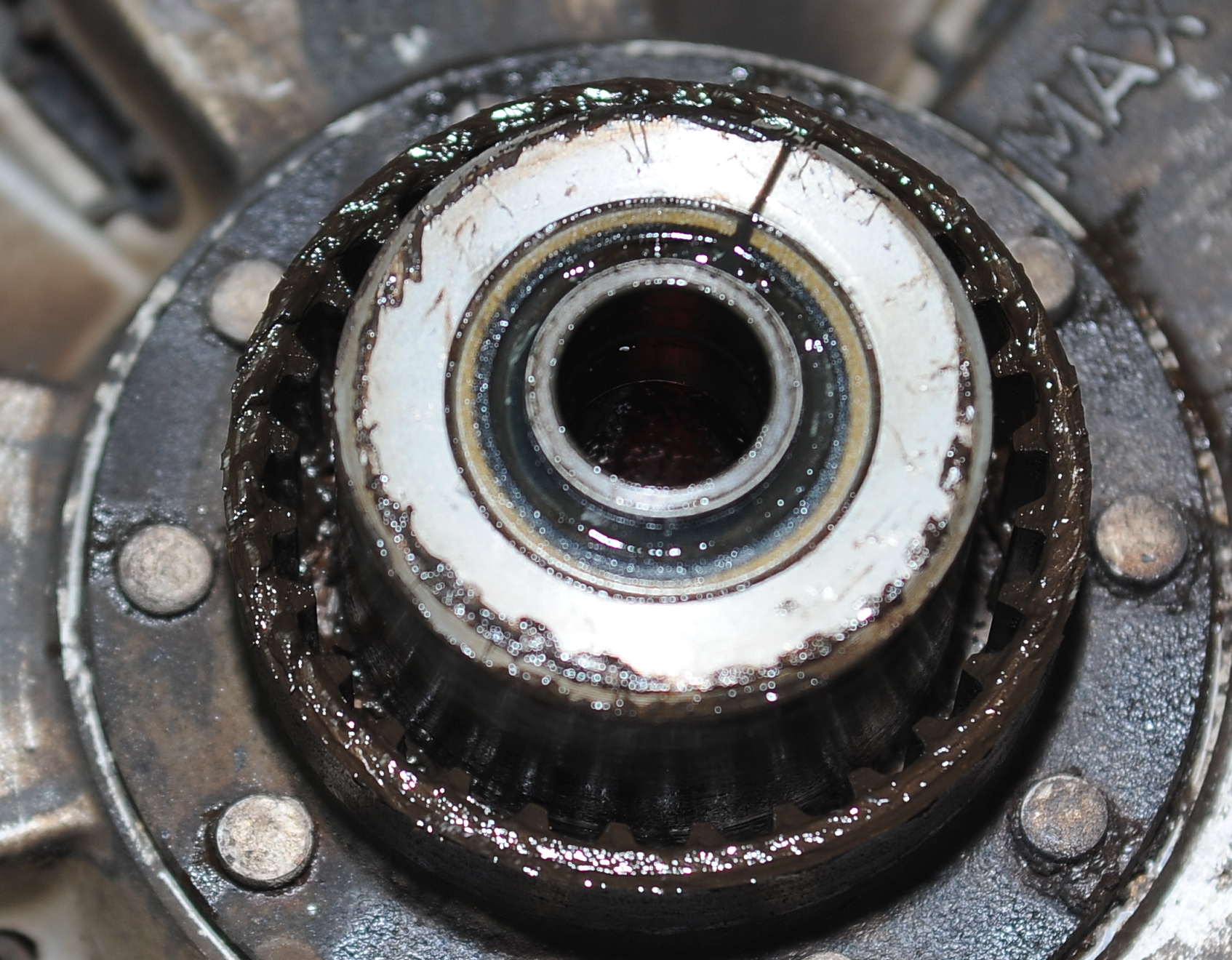
The final drive splines, while not yet pointy, are pretty thin. One a positive note, the brake shoes look good, and there don’t appear to be any oil leaks from the final drive. I’m not sure how much it would cost to repair, but a brand new drive is still available for under $1k. I think I’m going to get at the clutch to to check the transmission input shaft and clutch splines before I try to solve this problem.

Next task, remove the swing arm.
